
Carter Jonas continually monitors the planning and development landscape across local authorities to locate and manage opportunities. This quarterly news bulletin provides insight and analysis of the current development climate for clusters of local authorities within the home counties. This quarter we look at Hertfordshire and Essex.
10 minute read

SIGN UP TO RECEIVE OUR PLANNING & DEVELOPMENT RESEARCH AND ARTICLES


The second instalment of the Government’s Housing Delivery Test (HDT) was published in February 2020. Essex and Hertfordshire contain some of most poorly performing Local Planning Authorities (LPAs) in the country. Four of the LPAs score so low that they automatically trigger the presumption in favour of sustainable development within footnote seven of the National Planning Policy Framework (NPPF), whilst a further 11 are required to apply a 20% buffer to their 5-year housing supply in order to make up for historical under-delivery.
novembER 2020
HOME COUNTIES
HOUSING & LOCAL
PLAN UPDATE
Hertfordshire and Essex

Local Plan position & 5-year housing supply

Housing Delivery Test data

Development drivers

Garden communities update
10 local authorities within Hertfordshire
This map illustrates local authorities individual Local Plan positions and their 5-year housing supply
Broxbourne
5-year housing supply >
North Hertfordshire
Hertsmere
East Herts
Dacorum
B
D
EH
H
NH

Housing Delivery Test 2019
Due to the transitional arrangements currently in place for the HDT, the November 2020 HDT results will be the first year where the standard methodology for calculating local housing need will impact the outcome. The below table compares how the next instalment of the HDT test may look if existing delivery rates are maintained, painting an even more bleak picture for the majority of LPAs in Hertfordshire and Essex.
Essex – Housing delivery requirements vs delivery
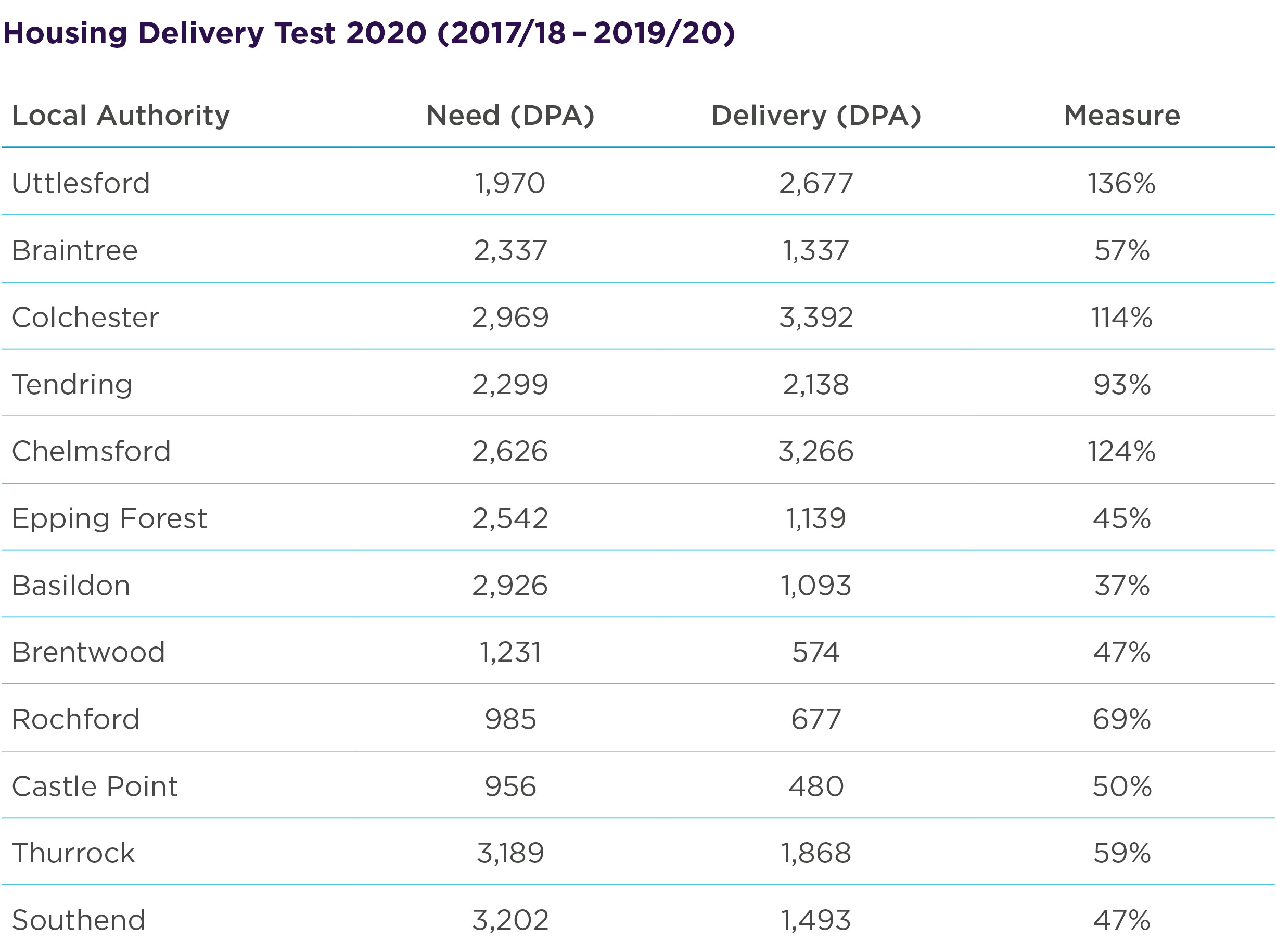
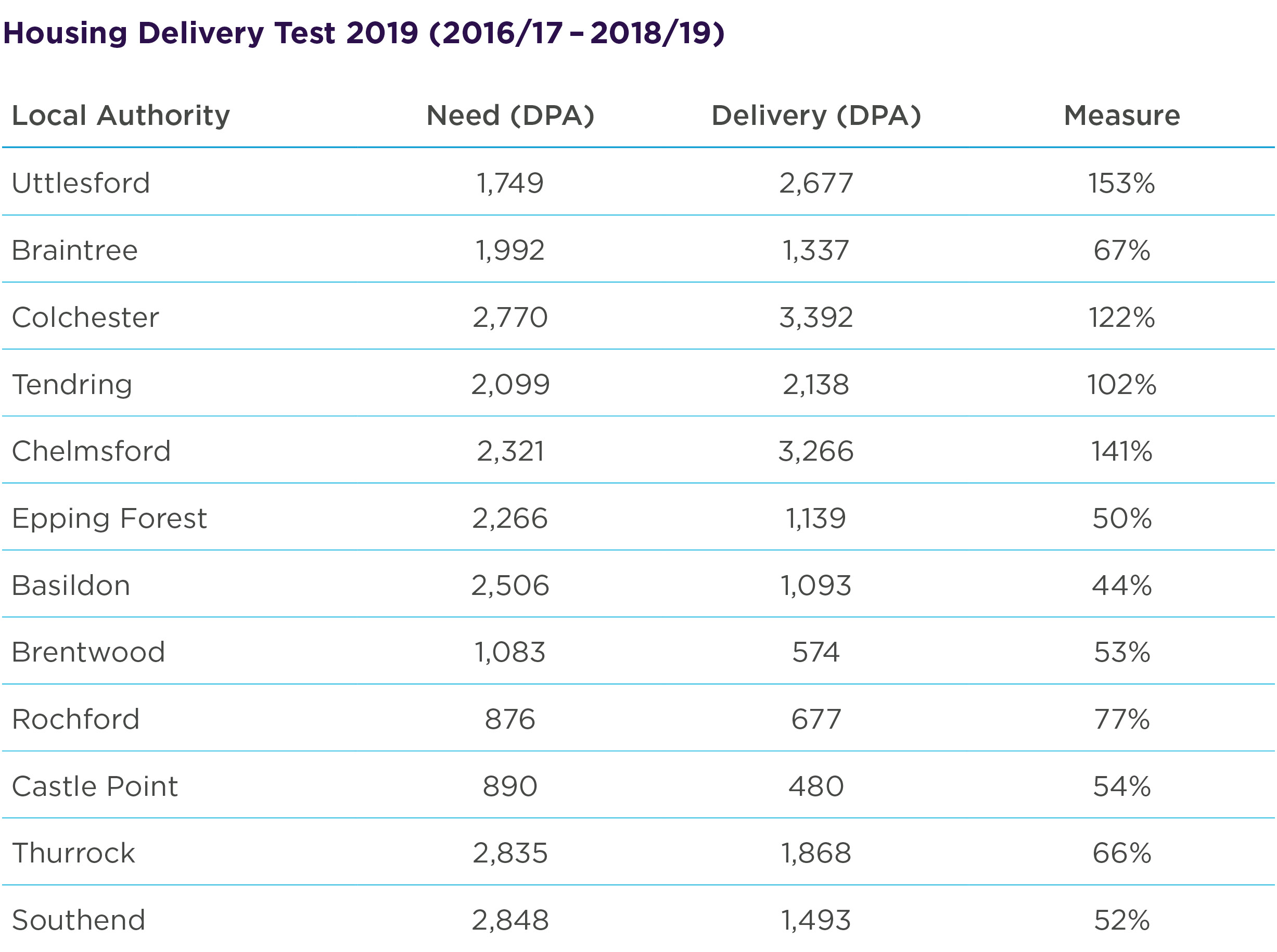
The requirement to deliver enough housing to meet local housing need figures will place authorities – who are currently delivering at lower rates – under pressure. Should delivery rates fail to remain steady or fall from existing levels, authorities will be required to identify additional 20% buffers to 5-year supplies, and/or produce action plans to address poor delivery. This has the potential to create additional opportunities, either through the identification of new sites, or the need to densify existing development sites.
View 2020 estimates
View 2019 HDT
Development drivers
Lower Thames Crossing
The Lower Thames Crossing is the third proposed crossing East of London (though QEII Bridge and Dartford tunnels effectively form just one crossing).
Supplementary consultation ran from 29 January to 2 April 2020. This covered relatively minor design updates. A DCO application is timetabled for 2020 with opening scheduled for 2027/28.
Thurrock Borough Council and Gravesham Borough Council remain opponents of the crossing and will be the two communities most impacted by the proposals.




In February 2020, the High Court dismissed a challenge by campaign group Stop Stansted Expansion to quash the Transport Secretary’s 2018 decision to allow Uttlesford District Council to determine plans for Stansted’s expansion.

Plans to increase capacity at the airport were rejected by Uttlesford District Council against officers’ recommendations.
Stansted Airport

January 2020 update suggests full opening will not be until mid-2022 following Paddington-Abbey Wood opening in summer 2021.

Continued delays of central stations have stalled the ability for the Elizabeth Line to run uninterrupted from Shenfield to Reading.
Crossrail

Hertfordshire authorities have been consistently against the plans.

The submission of a DCO application was intended in June 2020 that would expand the airport from 18 million passengers a year to 32 million, with second terminal. This has now been pushed back to 2021 and will likely be revised.
Luton Airport
Critical calendar dates
Contact francis

contact francis

Contact the key contributors to this research:


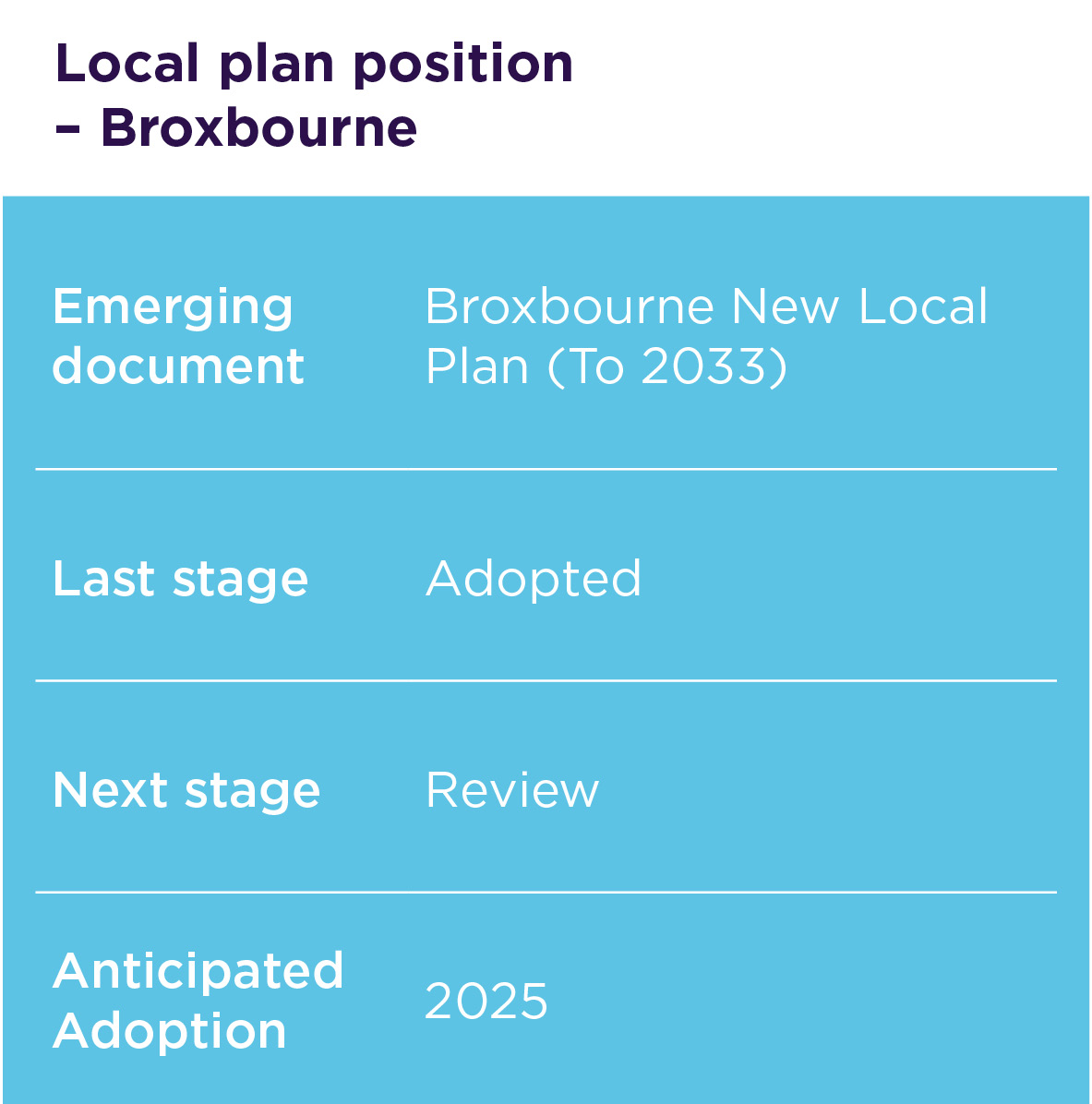
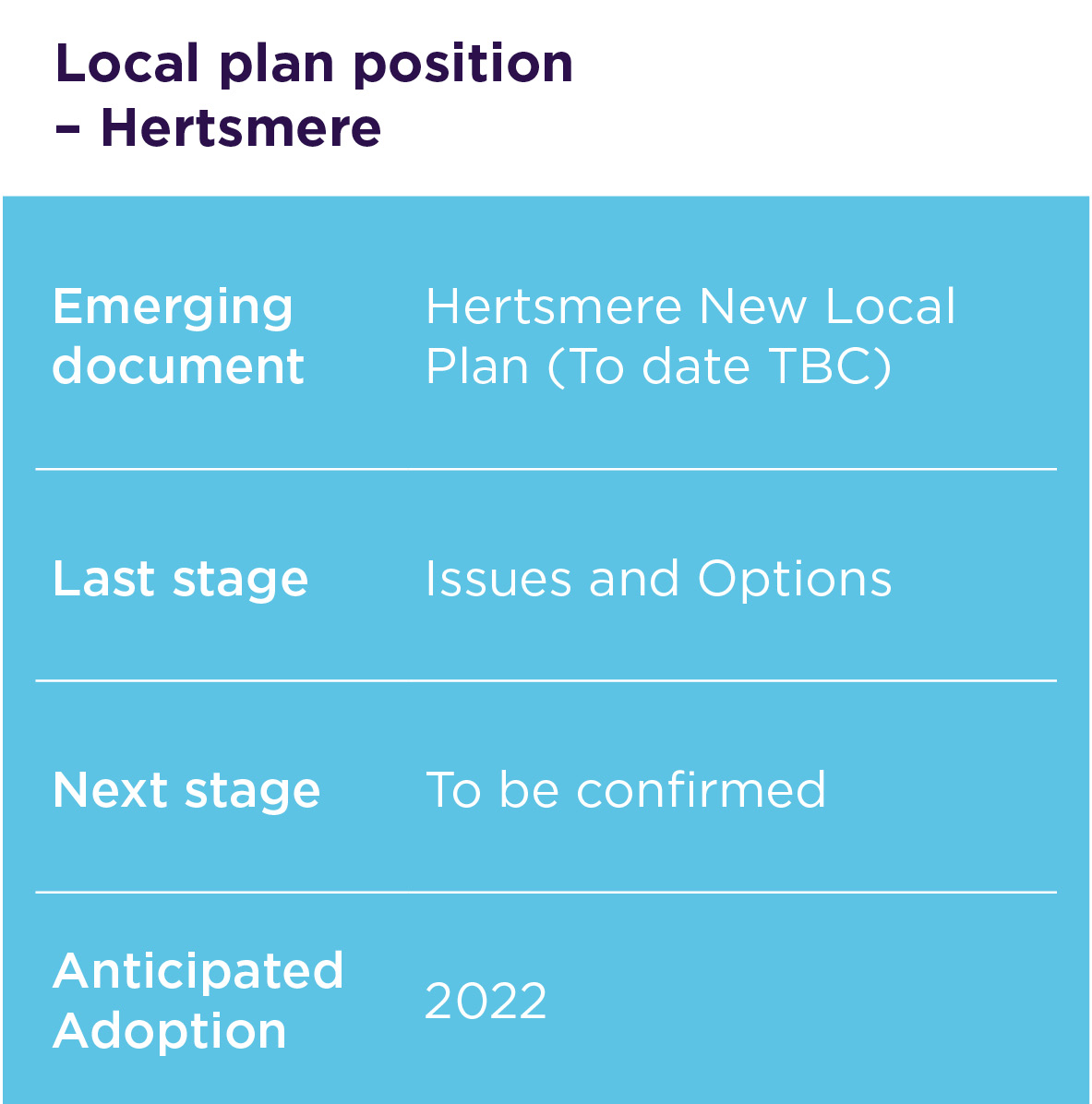
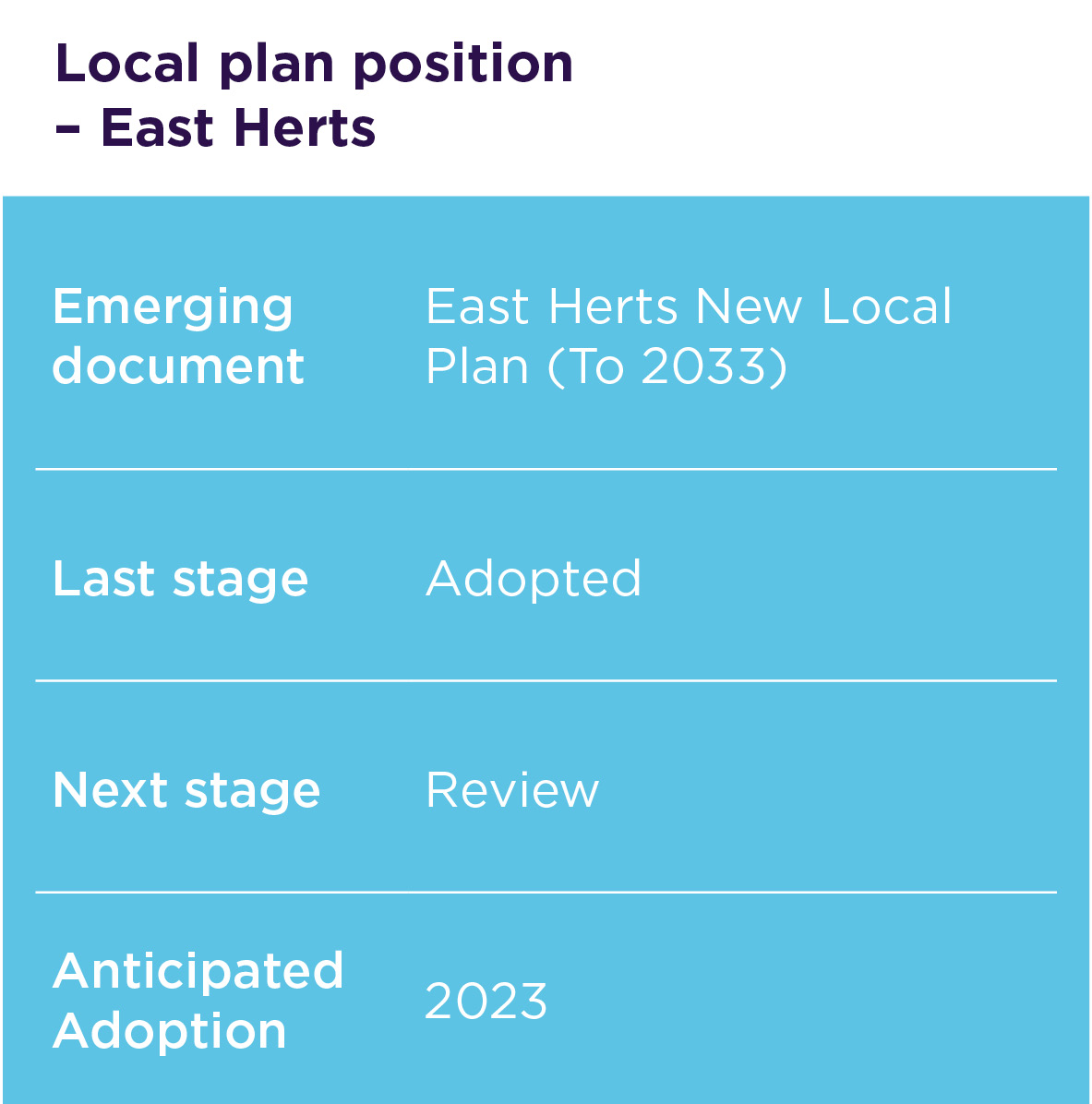
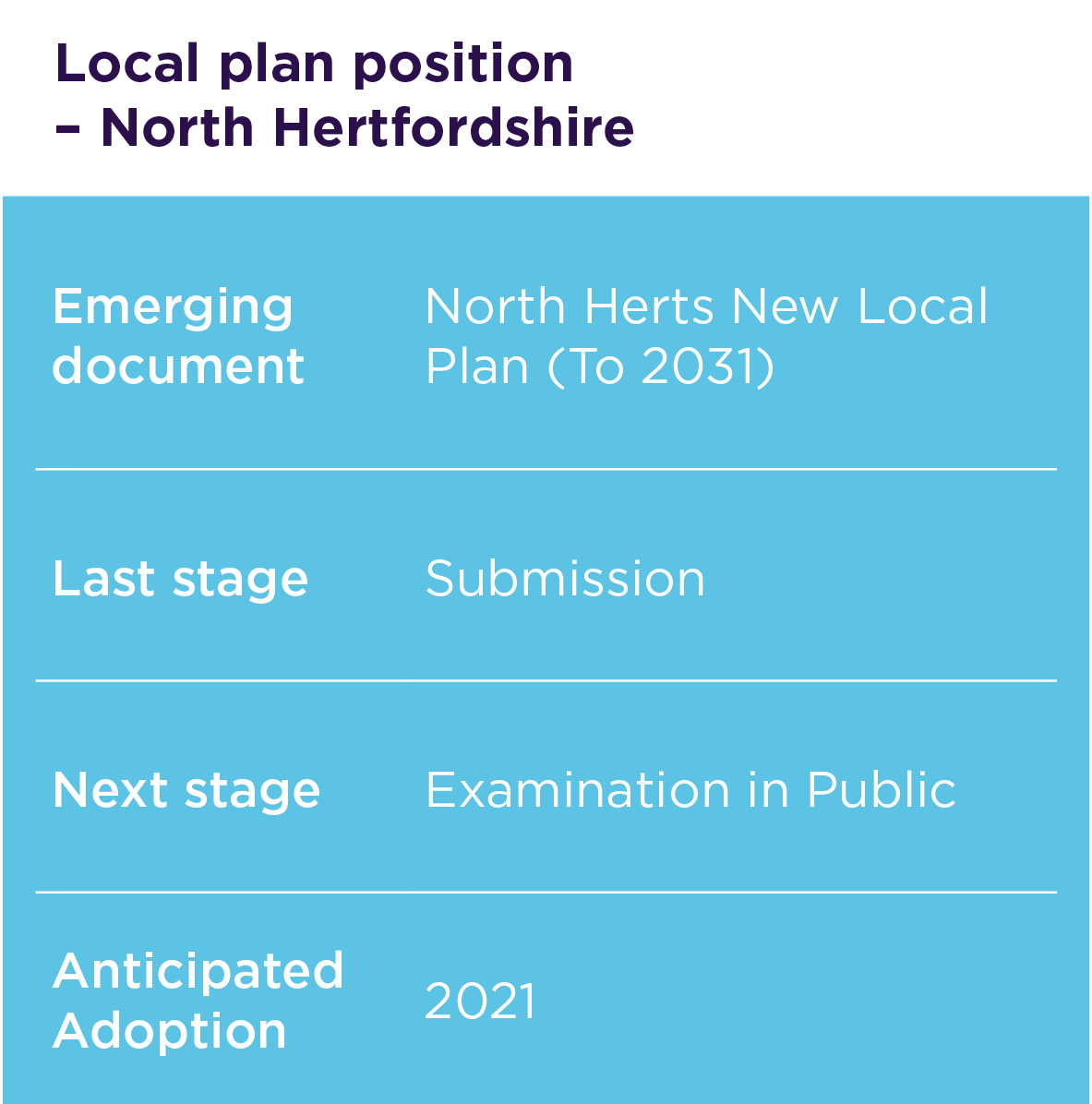
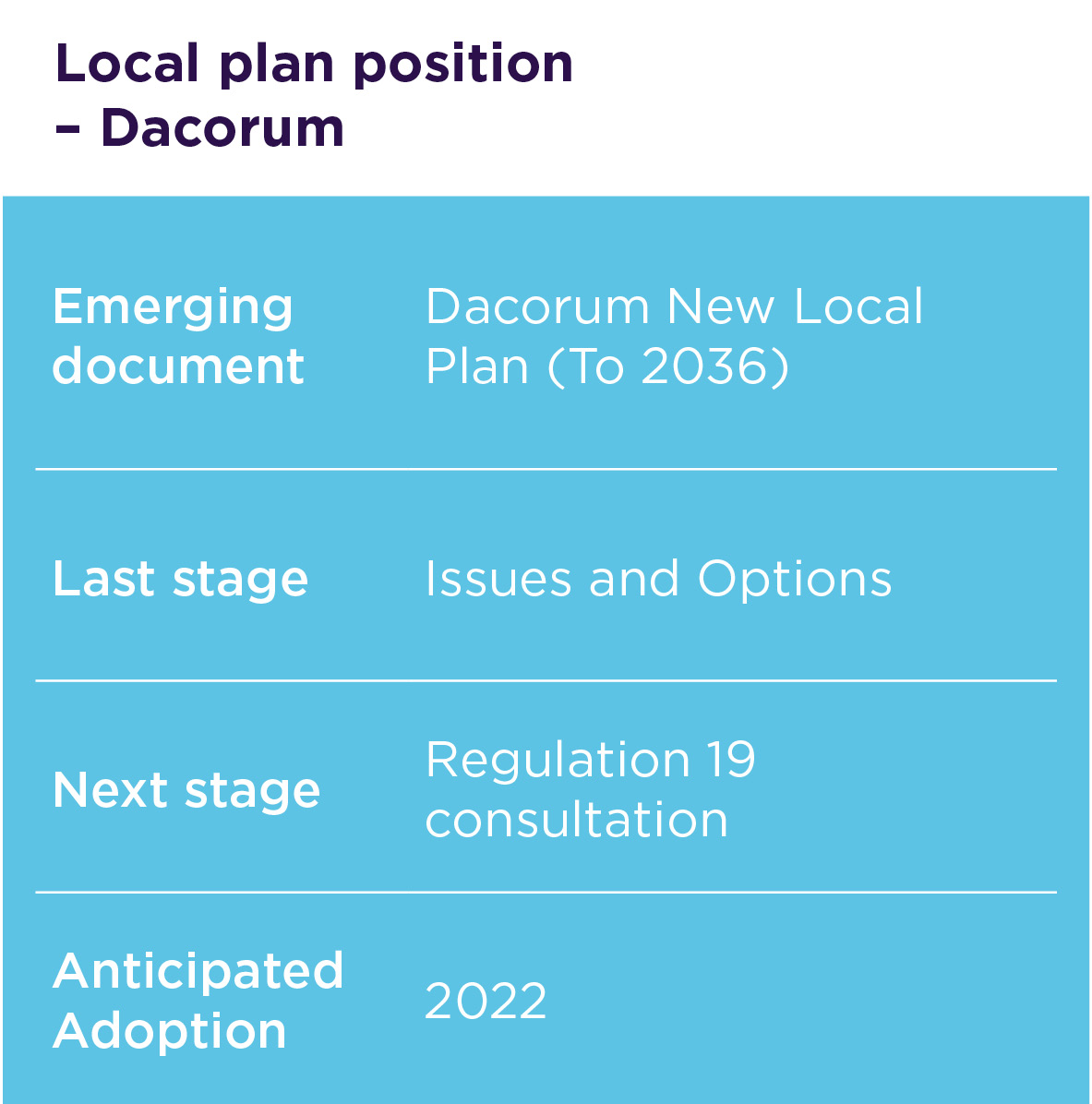
Local Plan position >
5-year housing supply >
Local Plan position >
5-year housing supply >
Local Plan position >
5-year housing supply >
Local Plan position >
5-year housing supply >
Local Plan position >
5-year housing supply >
Local Plan position >
5-year housing supply >
Local Plan position >
5-year housing supply >
Local Plan position >
5-year housing supply >
Local Plan position >
5-year housing supply >
Local Plan position >
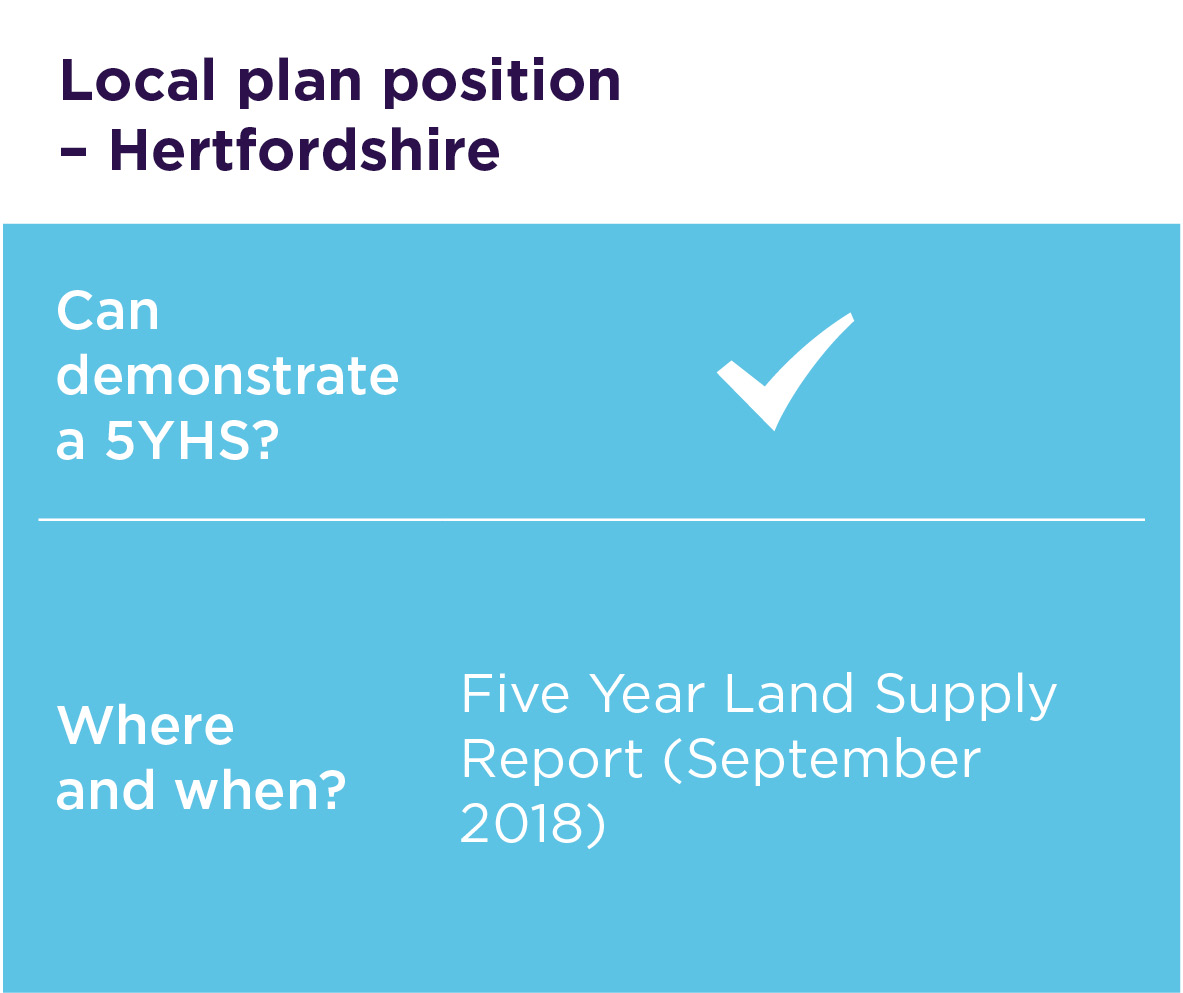
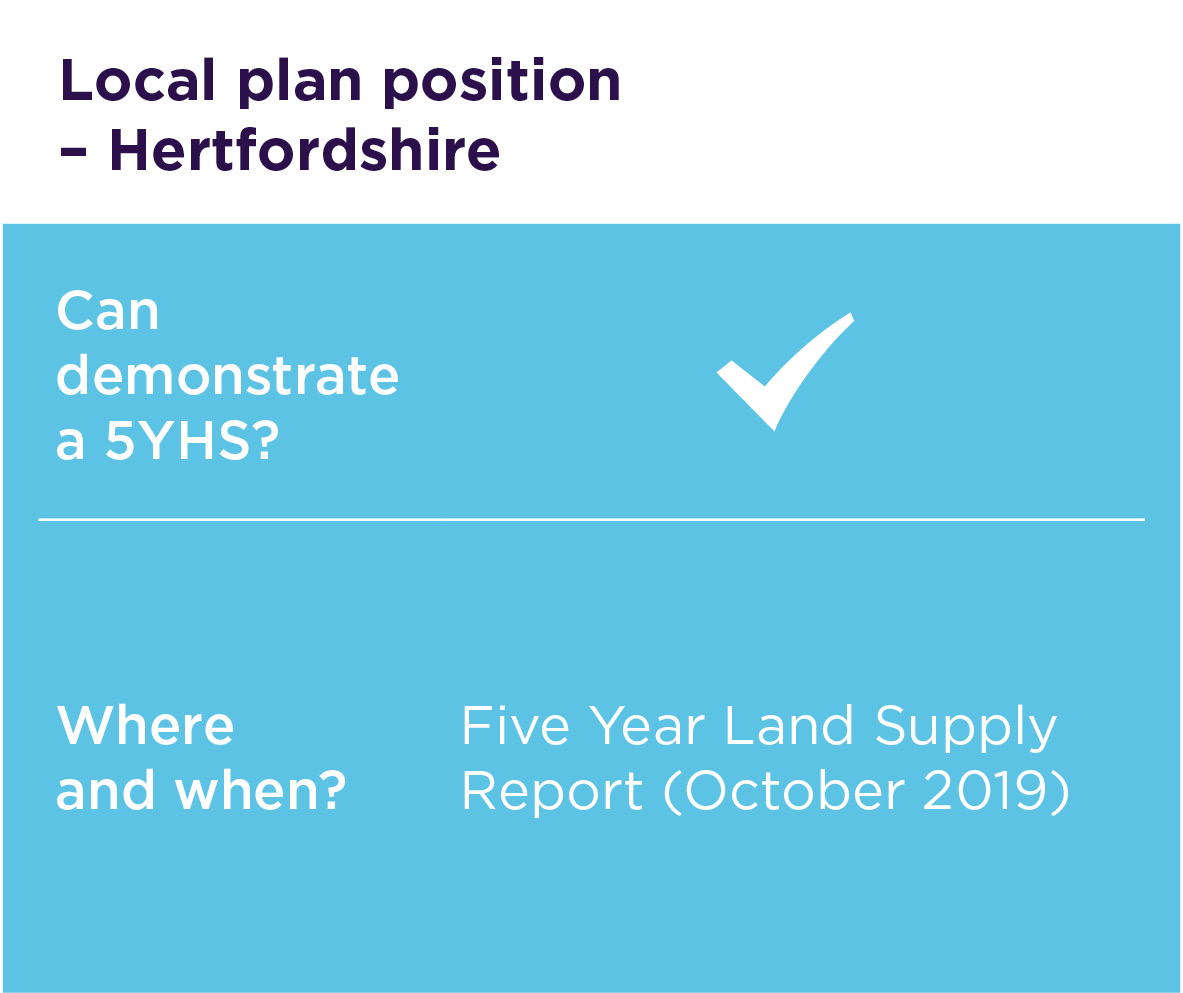
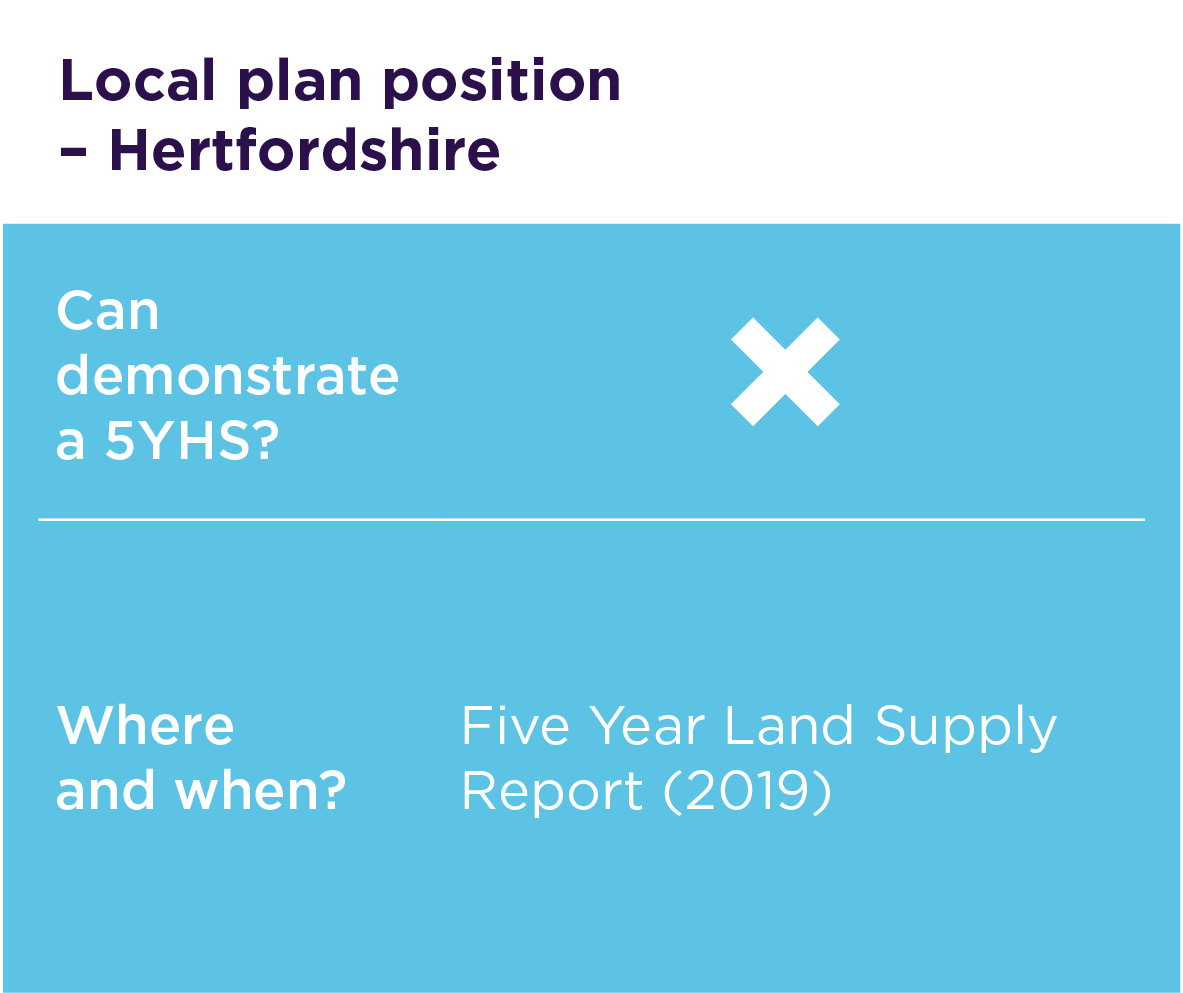
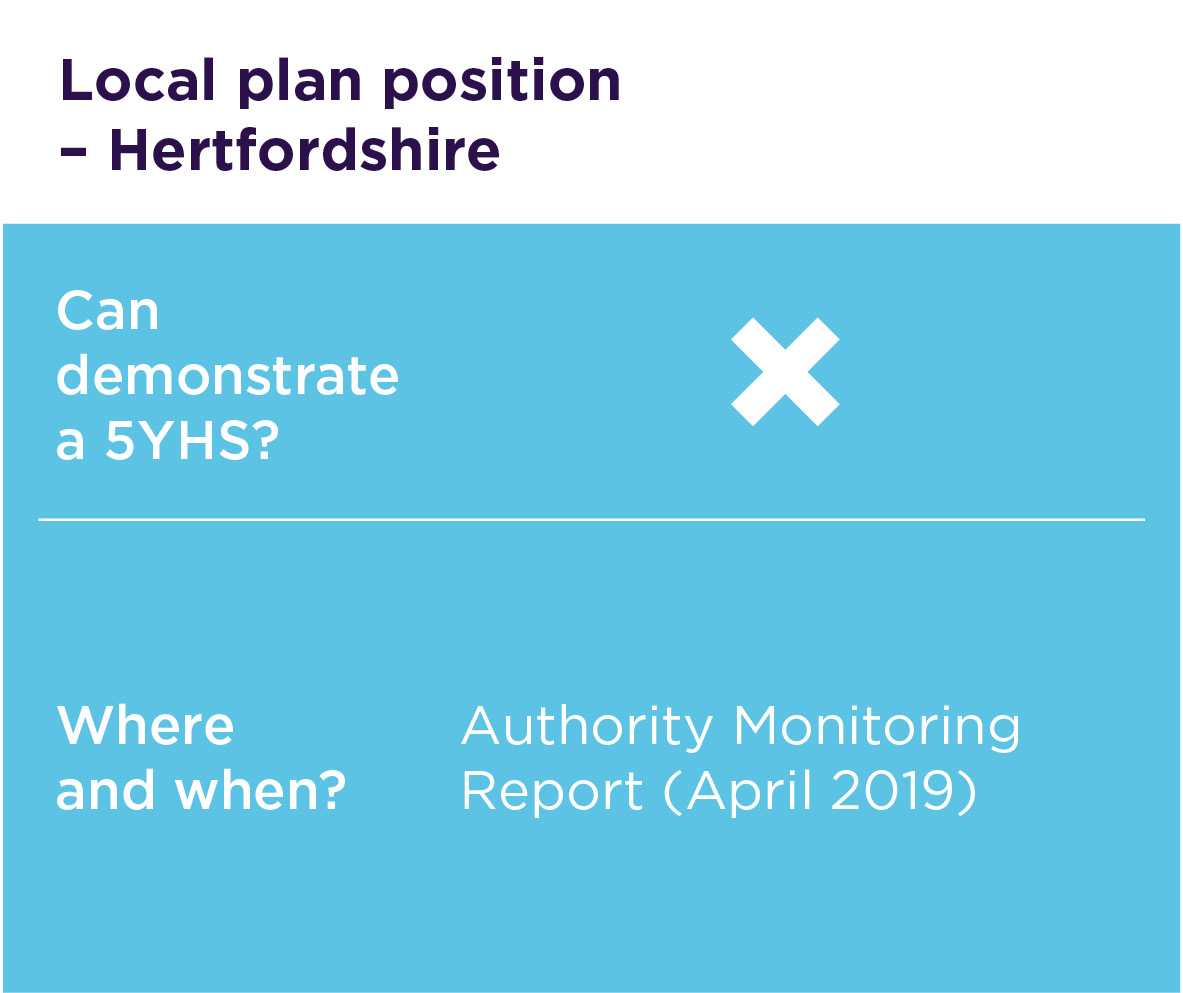

North Hertfordshire
5-year housing supply >
Local Plan position >
Hertsmere
5-year housing supply >
Local Plan position >
East Herts
5-year housing supply >
Local Plan position >
Dacorum
5-year housing supply >
Local Plan position >
Broxbourne
5-year housing supply >
Local Plan position >
WH
EH
B
NH
SA
D
S
*Due to the outbreak of COVID-19 these provisional dates are subject to change.


explore the list for more information
Glossary

EMAIL DAVID
07866 794560
Partner, Planning
David Churchill

EMAIL FRANCIS
07787 282092
Partner, Strategic Land
Francis Truss
Our regional planning experts work out of five hubs, providing a truly national service for their clients:

EMAIL NICK
07584 681596
London
Nick Taylor

EMAIL EMMA
07973 505576
North
Emma Winter

EMAIL STEVEN
07970 796762
South and South West
Steven Sensecall

EMAIL COLIN
07771 924426
East
Colin Brown

EMAIL ROBERT
07771 898954
National Strategic Land
Robert Smith

EMAIL JOHNNY
07557 428136
National Masterplanning
Johnny Clayton
Our national service specialists:
The below research is a snippet from the full published piece. To read the full content, view this link on a desktop. If you wish to discuss the current position of any Local Plan, please speak to one of our professionals.
Housing Delivery Test 2019 (2016/17 – 2018/19)

Estimated Housing Delivery Test 2020 (2017/18 – 2019/20) 2018/19)

Welwyn Hatfield
WH
5-year housing supply >
Local Plan position >
5-year housing supply >
Local Plan position >
Watford
W
5-year housing supply >
Local Plan position >
5-year housing supply >
Local Plan position >
Three Rivers
TR
5-year housing supply >
Local Plan position >
5-year housing supply >
Local Plan position >
Stevenage
S
5-year housing supply >
Local Plan position >
5-year housing supply >
Local Plan position >
St Albans
SA
5-year housing supply >
Local Plan position >
5-year housing supply >
Local Plan position >
Welwyn Hatfield
5-year housing supply >
Local Plan position >
Watford
5-year housing supply >
Local Plan position >
Three Rivers
5-year housing supply >
Local Plan position >
Stevenage
5-year housing supply >
Local Plan position >
St Albans
5-year housing supply >
Local Plan position >
Hertfordshire – Housing delivery requirements vs delivery
View 2019 HDT
View 2020 estimates
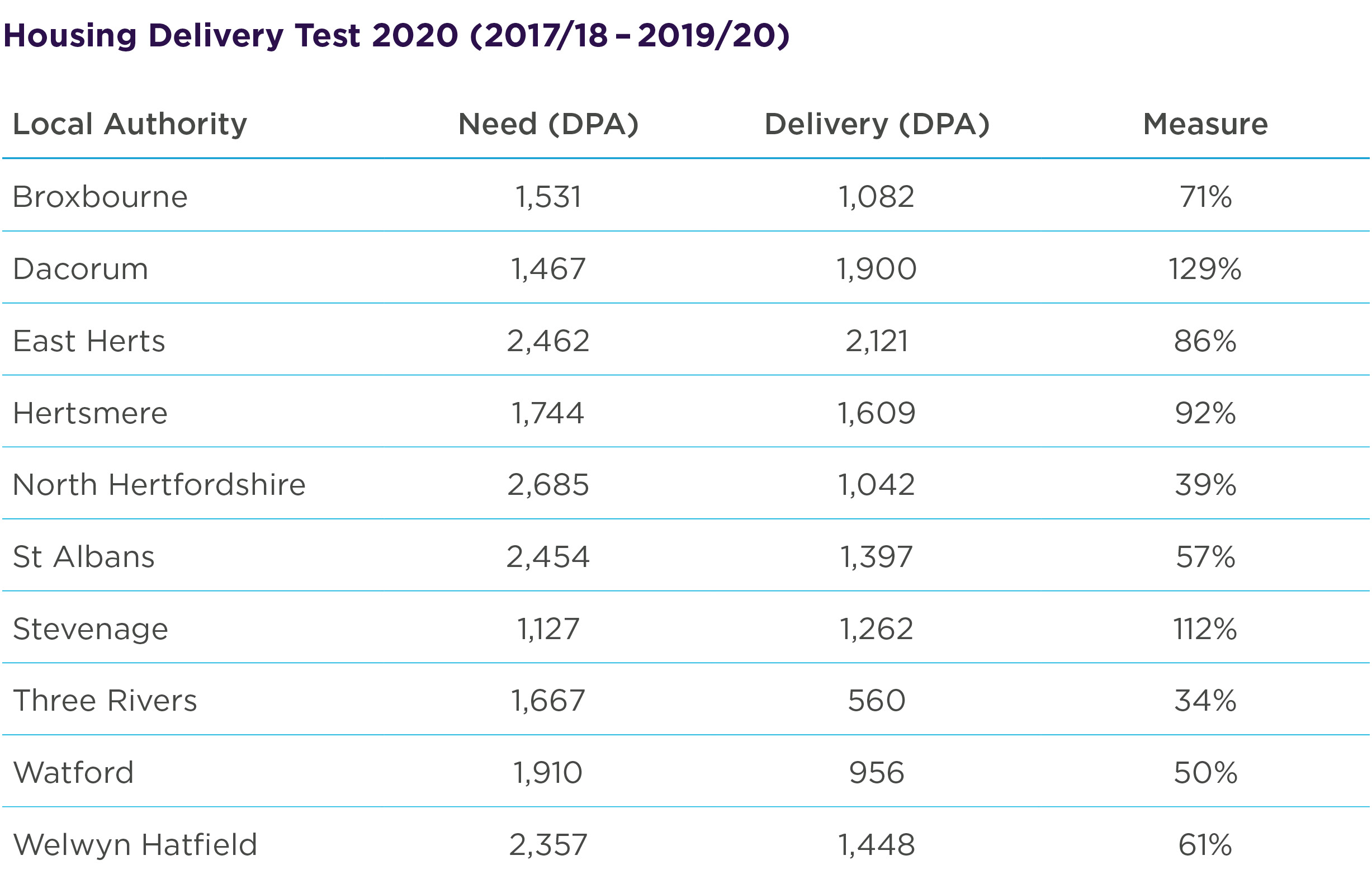
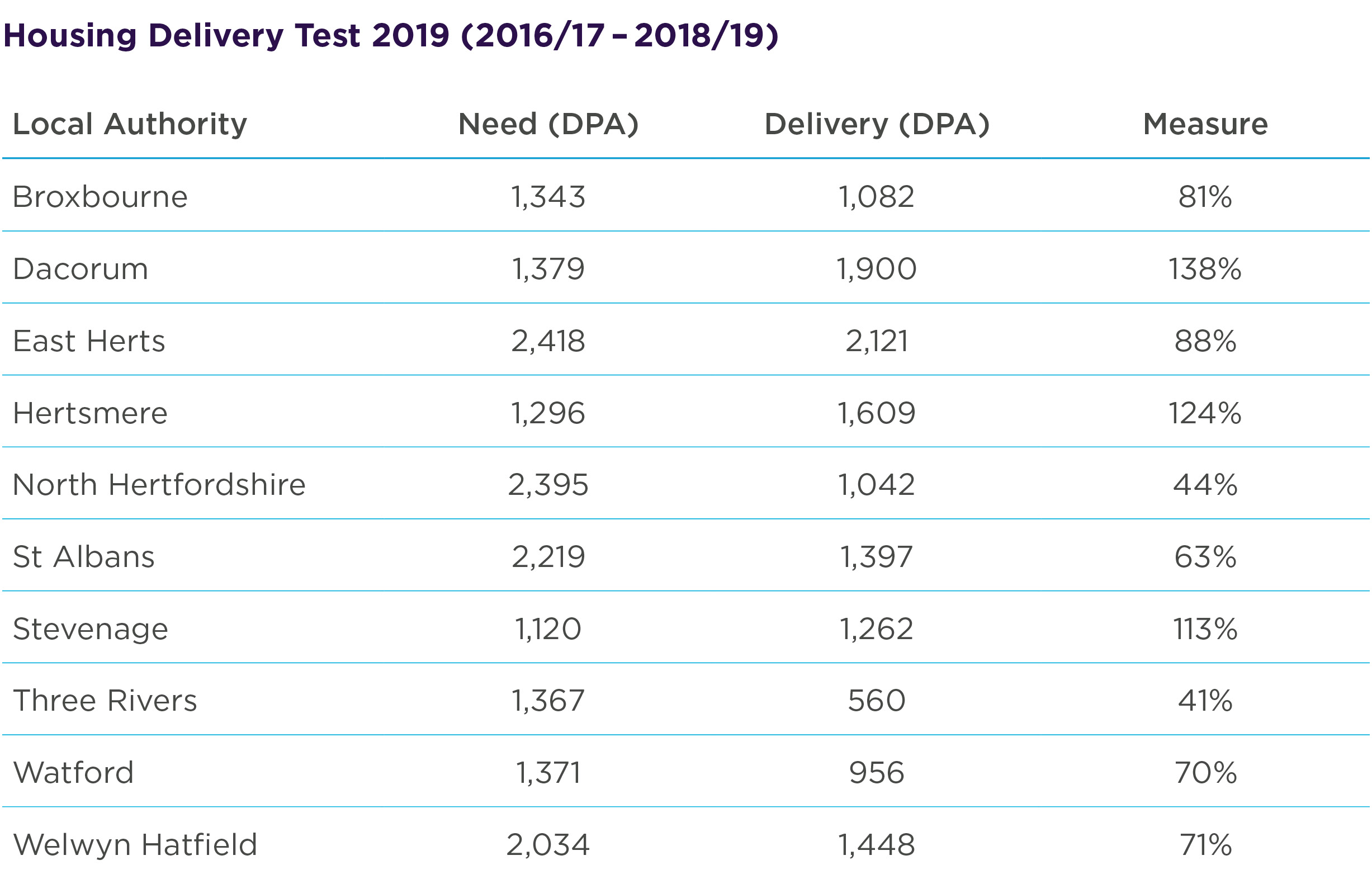

Target remains for Crossrail 2 to become operational ‘by the 2030s’ though has no formal funding commitments. This is due to run as far north as Cheshunt and Broxbourne, down through London and into Surrey.

12 local authorities within Essex
This map illustrates local authorities individual Local Plan positions and their 5-year housing supply
Thurrock
TH
5-year housing supply >
Local Plan position >
5-year housing supply >
Local Plan position >
Castle Point
CP
5-year housing supply >
Local Plan position >
5-year housing supply >
Local Plan position >
Rochford
R
5-year housing supply >
Local Plan position >
5-year housing supply >
Local Plan position >
Brentwood
BRE
5-year housing supply >
Local Plan position >
5-year housing supply >
Local Plan position >
Basildon
BAS
5-year housing supply >
Local Plan position >
5-year housing supply >
Local Plan position >
Chelmsford
CH
5-year housing supply >
Local Plan position >
5-year housing supply >
Local Plan position >
Tendring
TE
5-year housing supply >
Local Plan position >
5-year housing supply >
Local Plan position >
Colchester
CO
5-year housing supply >
Local Plan position >
5-year housing supply >
Local Plan position >
Braintree
BR
5-year housing supply >
Local Plan position >
5-year housing supply >
Local Plan position >
Uttlesford
U
5-year housing supply >
Local Plan position >
5-year housing supply >
Local Plan position >
Thurrock
5-year housing supply >
Local Plan position >
Castle Point
5-year housing supply >
Local Plan position >
Rochford
5-year housing supply >
Local Plan position >
Brentwood
5-year housing supply >
Local Plan position >
Basildon
5-year housing supply >
Local Plan position >
Chelmsford
5-year housing supply >
Local Plan position >
Tendring
5-year housing supply >
Local Plan position >
Colchester
5-year housing supply >
Local Plan position >
Braintree
5-year housing supply >
Local Plan position >
Uttlesford
5-year housing supply >
Local Plan position >
U

explore the list for more information

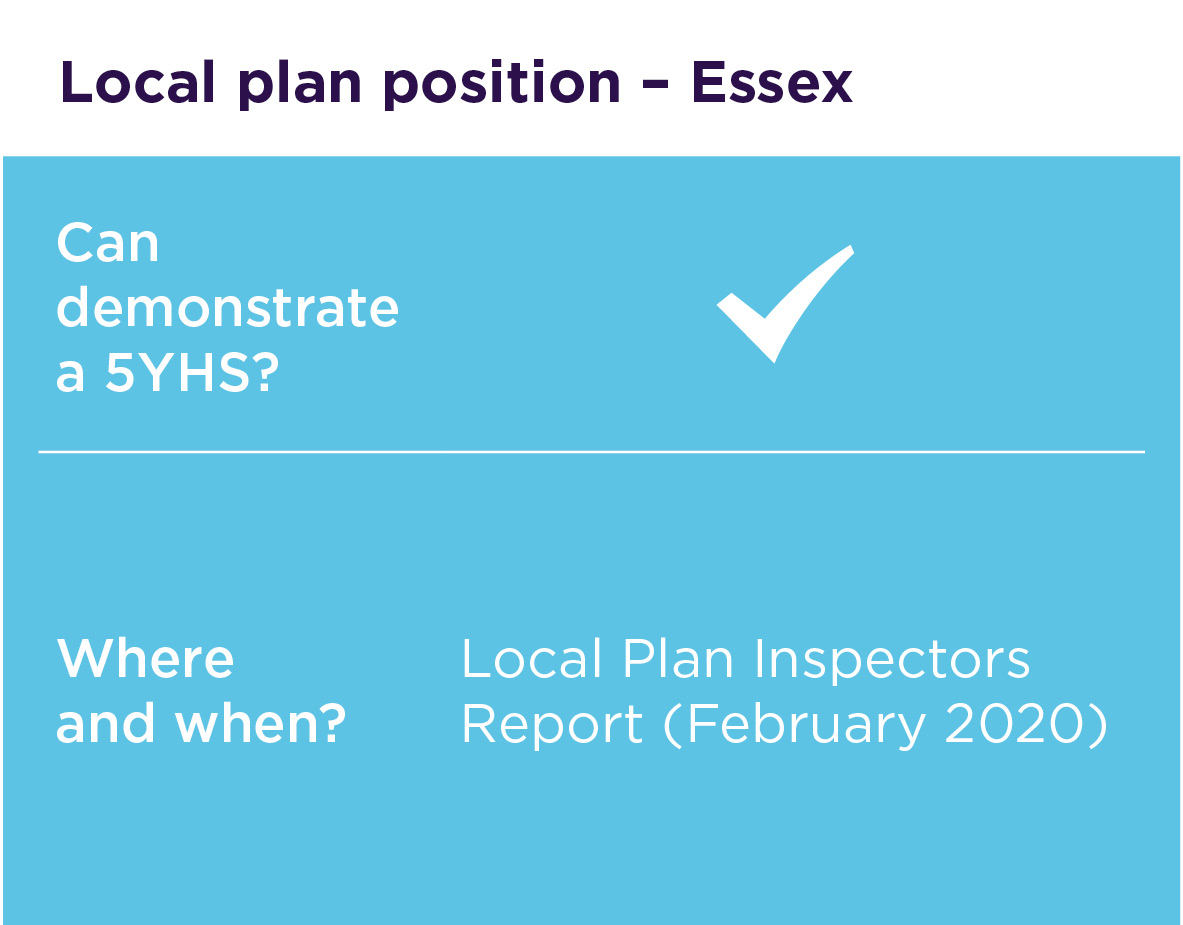
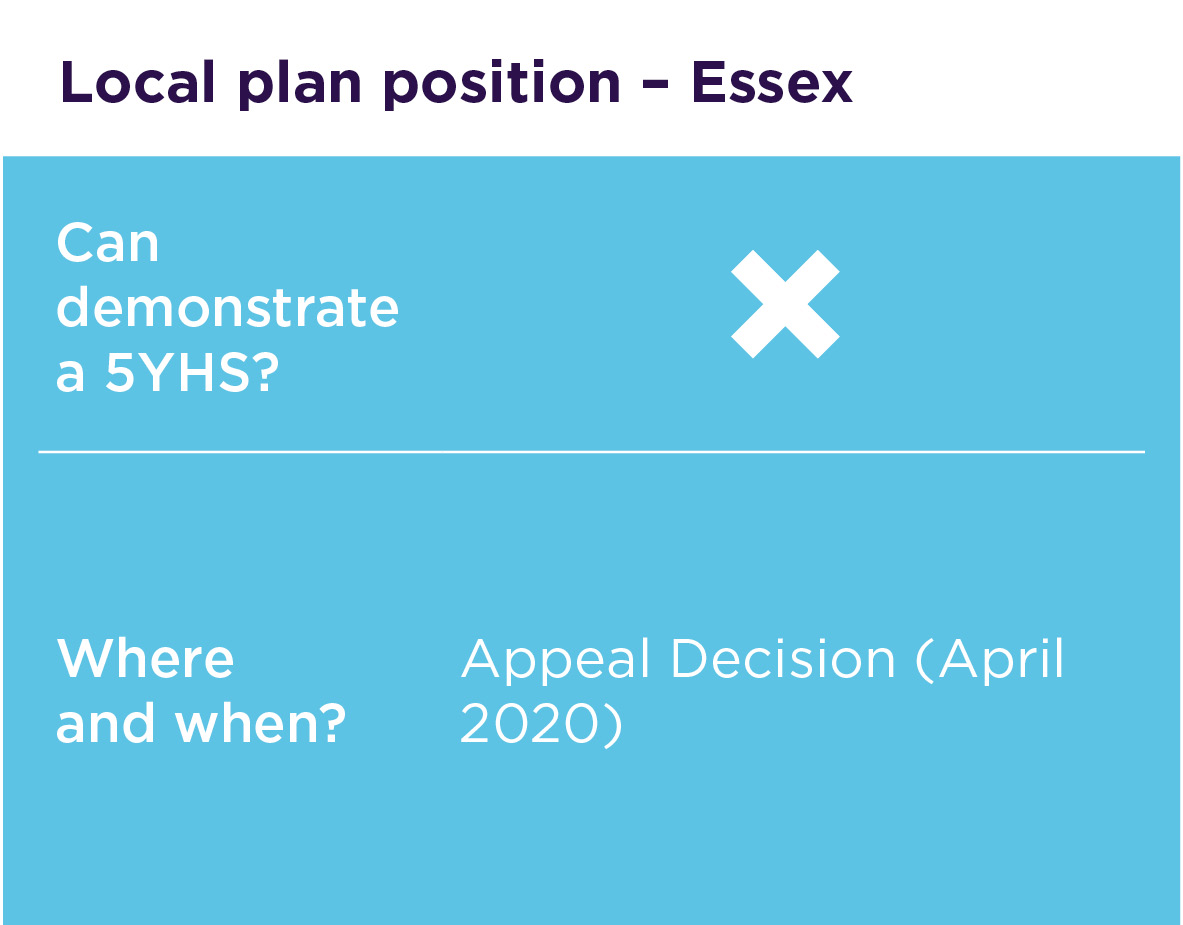

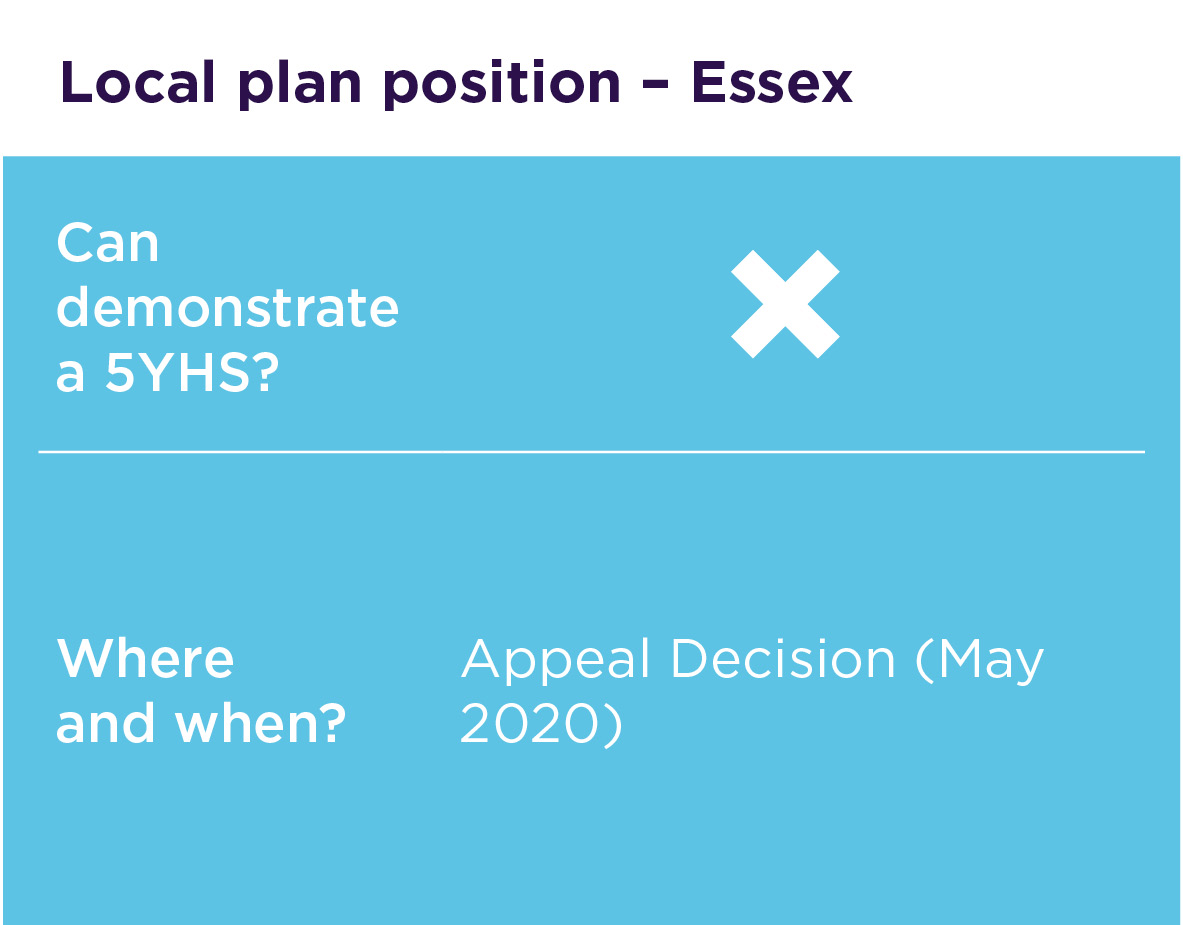
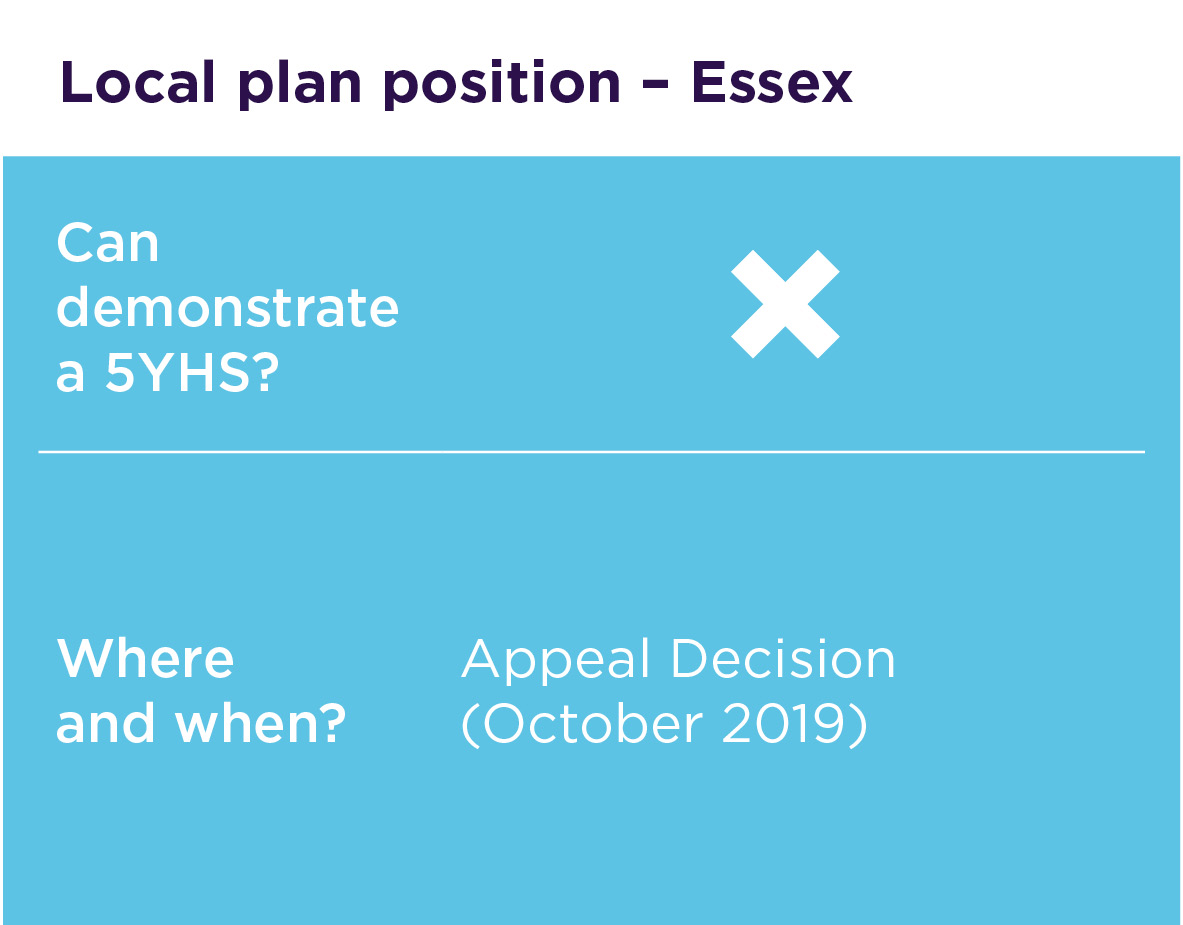
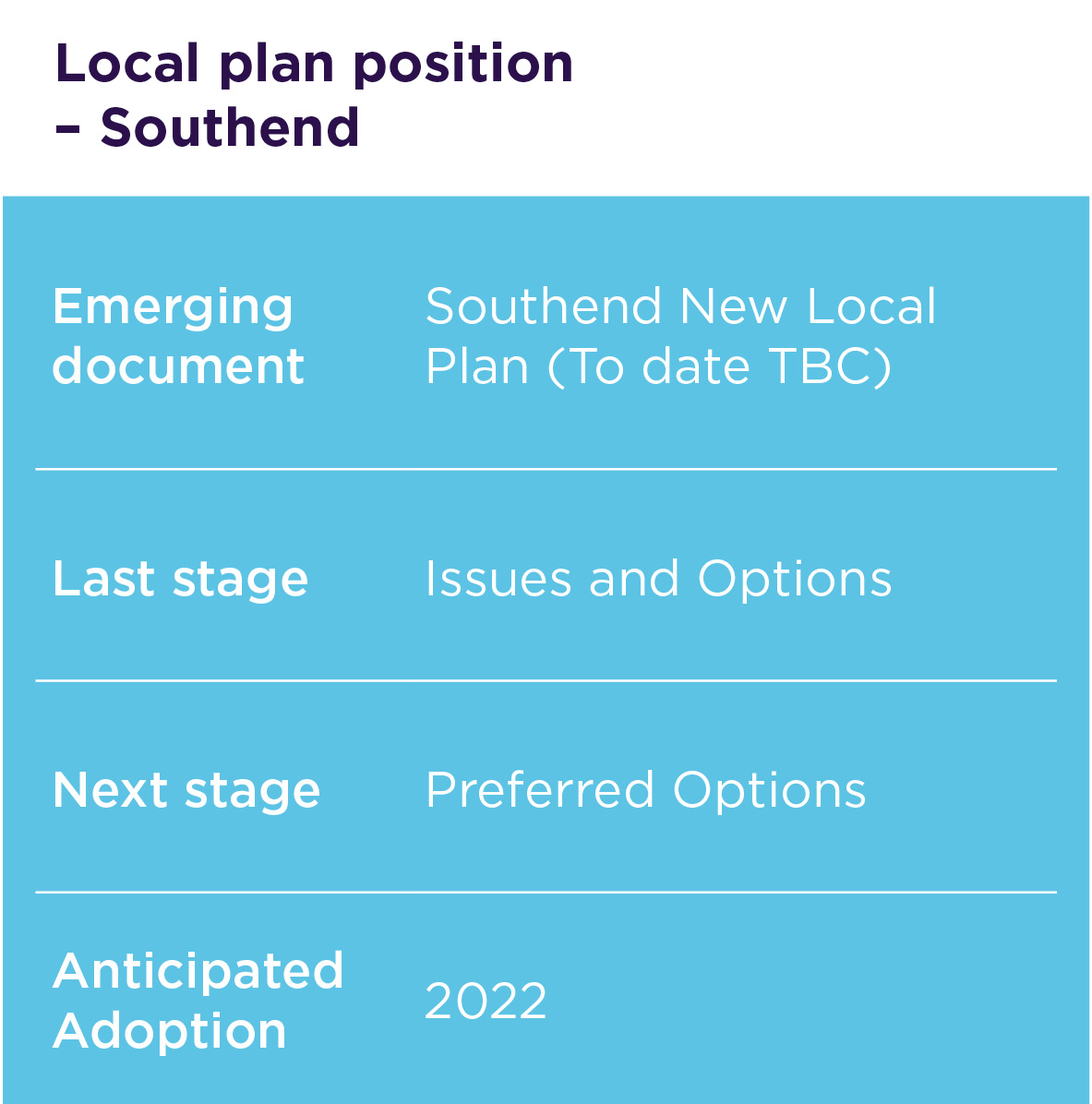
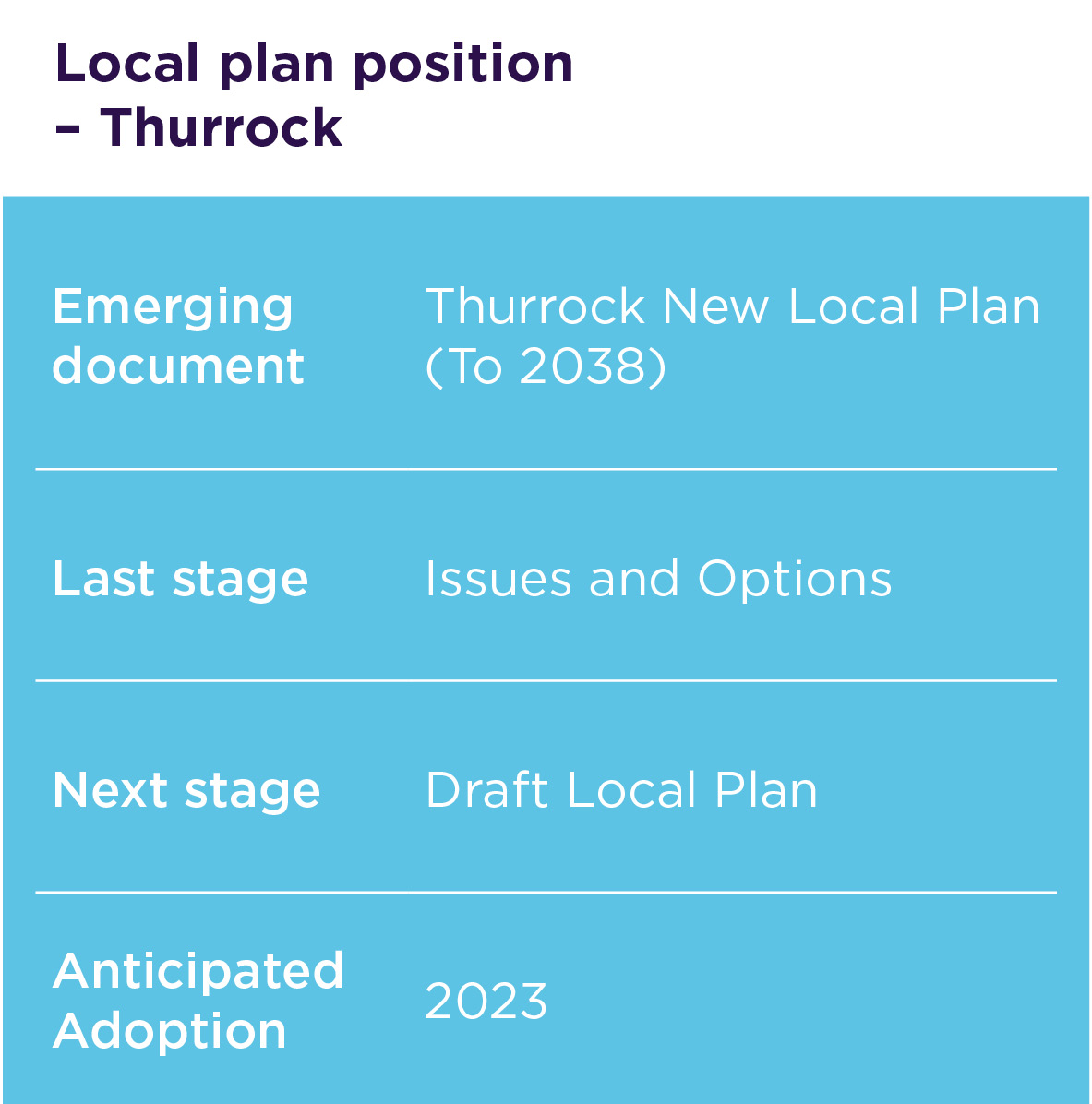
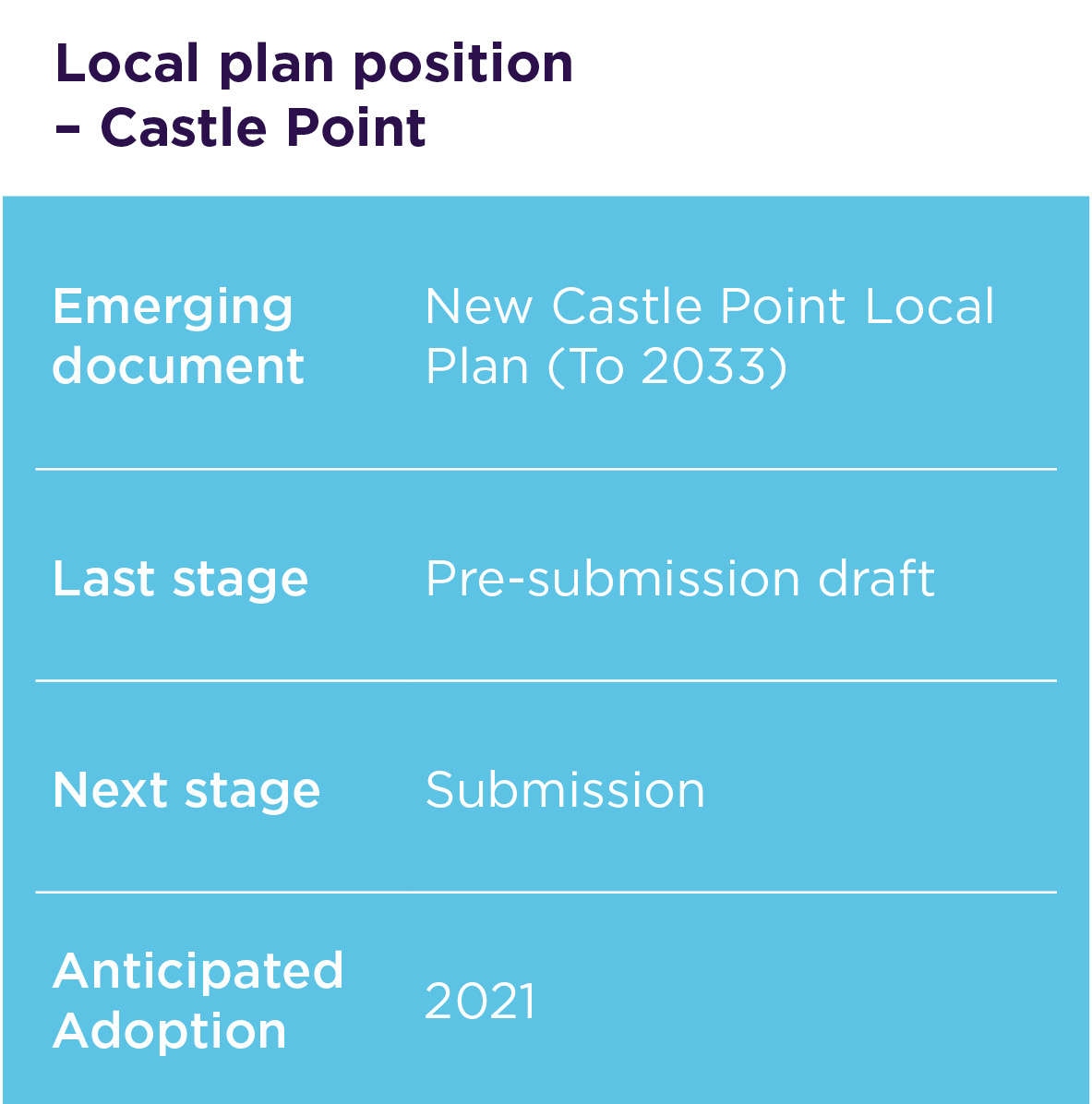
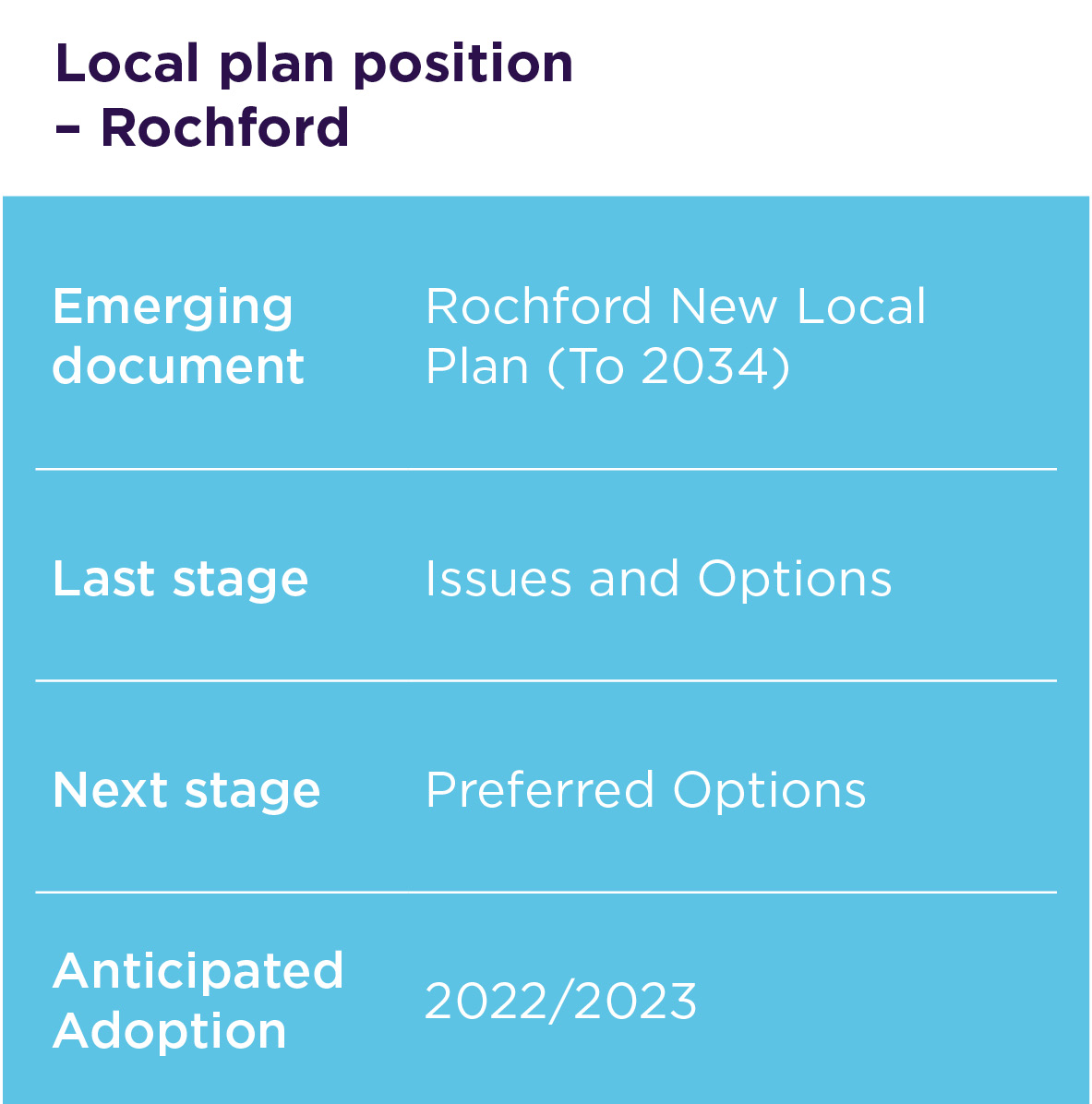
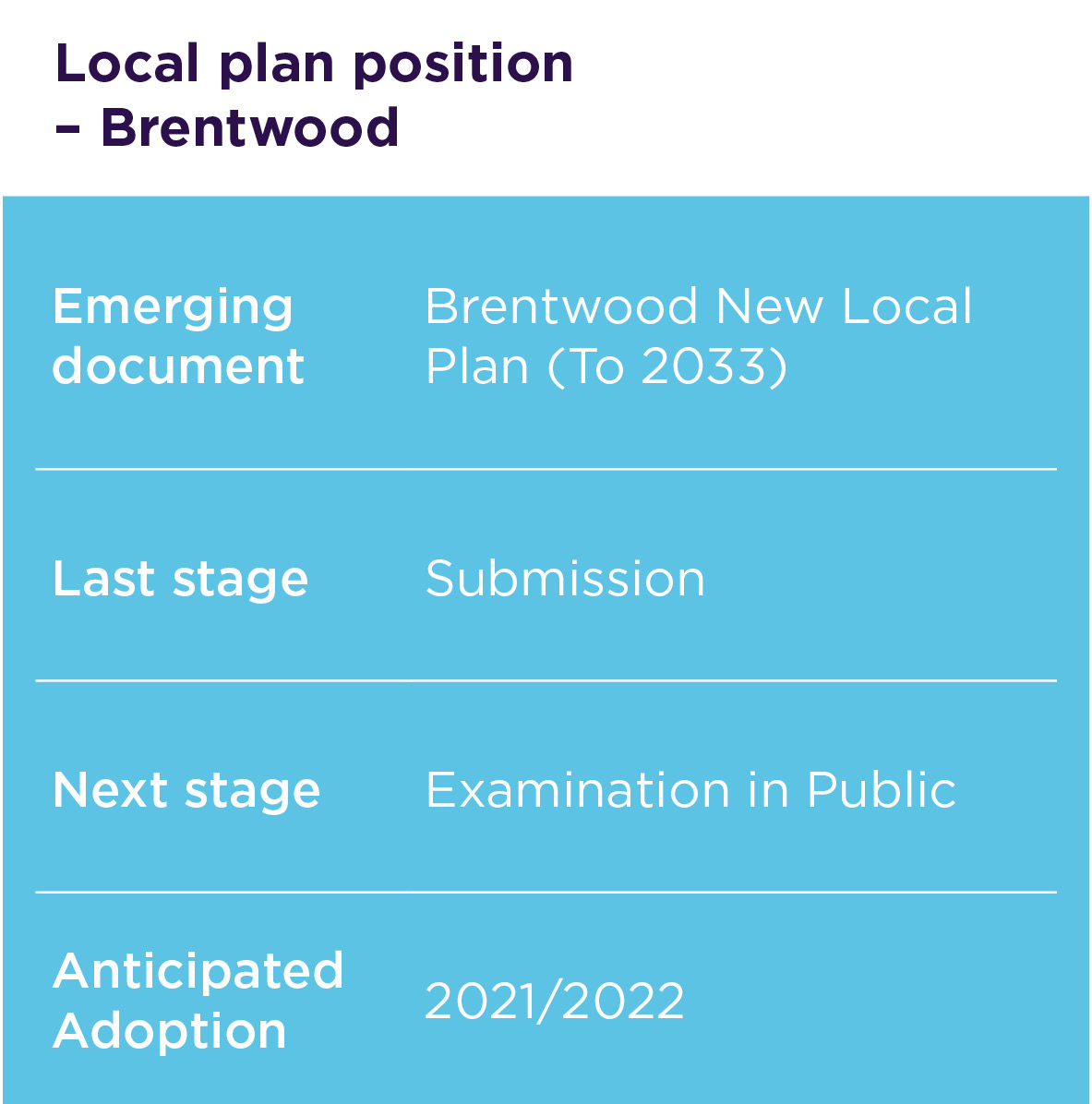

Glossary

Southend
S
5-year housing supply >
Local Plan position >
5-year housing supply >
Local Plan position >
Epping Forest
EP
5-year housing supply >
Local Plan position >
5-year housing supply >
Local Plan position >
Southend
5-year housing supply >
Local Plan position >
Epping Forest
5-year housing supply >
Local Plan position >
Supported by central Government, both politically and financially, the new garden communities were intended to be a significant source of housing supply to help address the housing shortages across the UK. However, the burden of evidence was too much for the relevant authorities to satisfy the planning inspectorate and each of the large new communities proposed were removed from emerging plans.
Hertfordshire is arguably the home of the garden city movement in the UK, with Welwyn Garden City celebrating its 100th anniversary this year, and 60 years after their founding, Stevenage and Hatfield are enacting plans to revamp their respective town centres to be fit for the 21st century. However, more recently attention has shifted to Essex and its plans for a new generation of garden communities.
How do you solve a problem like garden communities?
Garden communities update
The circumstances of their removal pose difficulties for all parties involved in promoting land at such a large scale and will leave a hurdle that will be difficult for any reasonable scheme or authority to surpass. Our professionals consider the challenges posed in further detail.
View article


EMAIL robert
07771 898954
National Strategic Land
Robert Smith

EMAIL johnny
07557 428136
National Masterplanning
Johnny Clayton
Our national service specialists:

Critical calendar dates
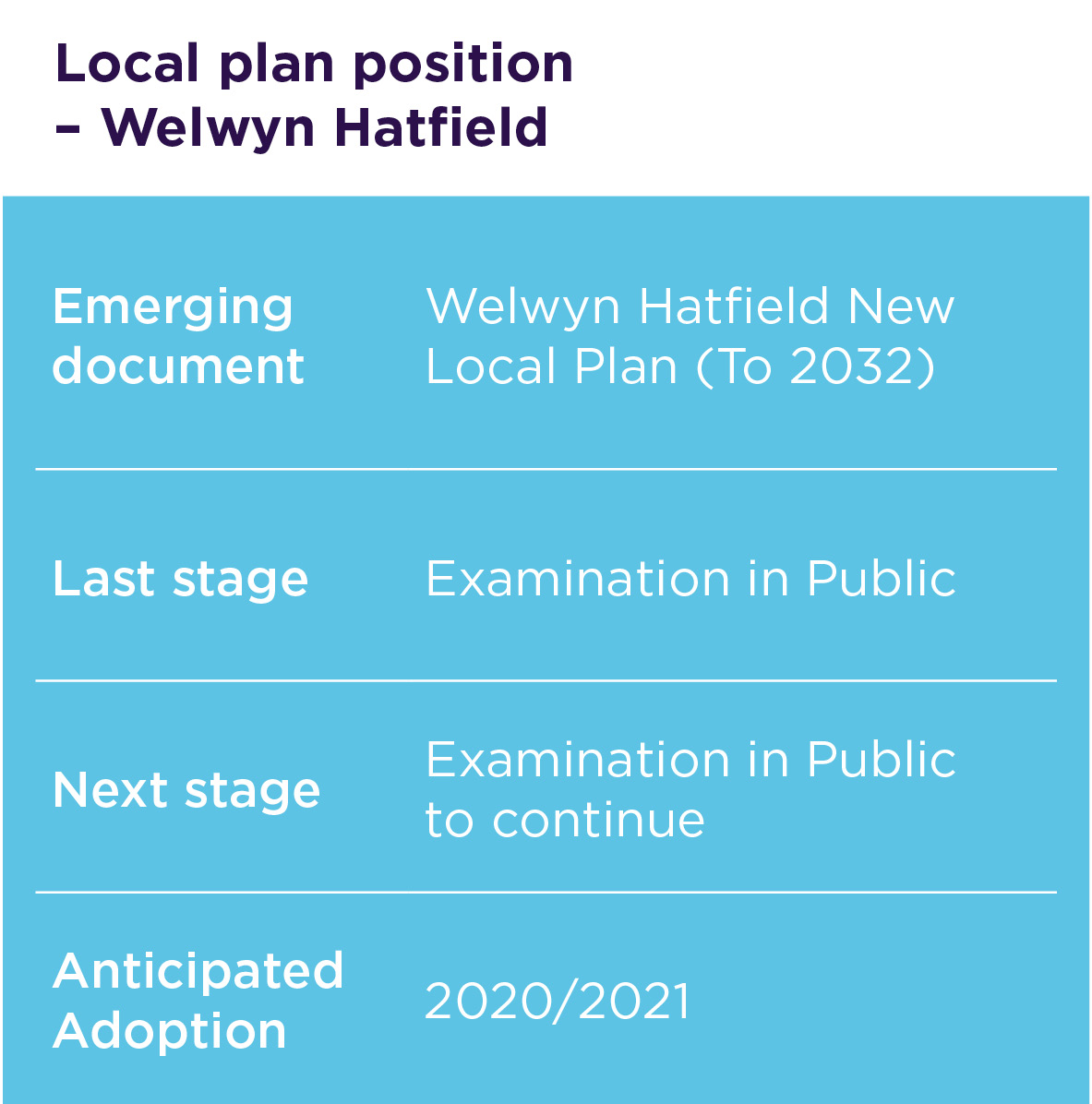
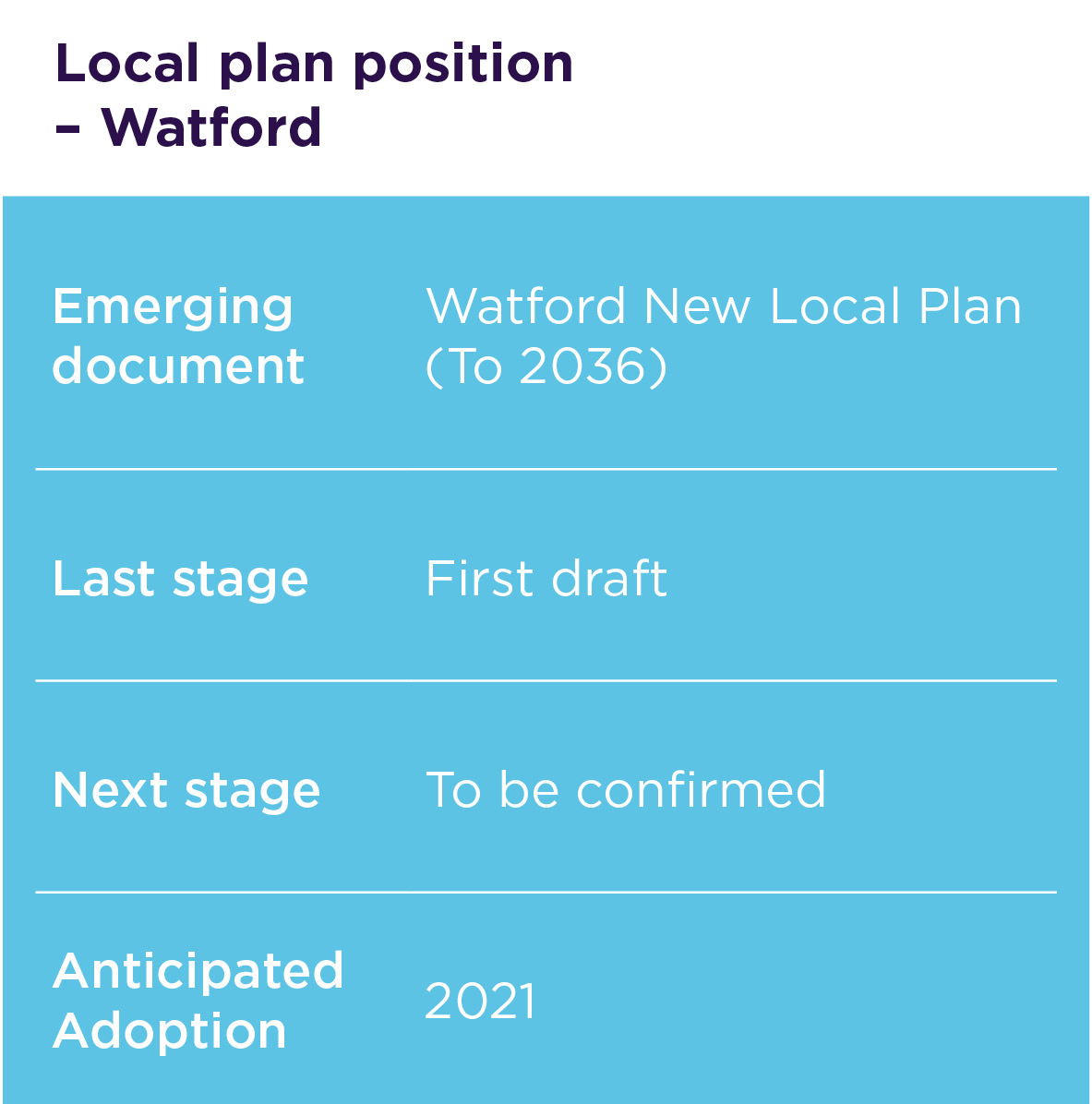
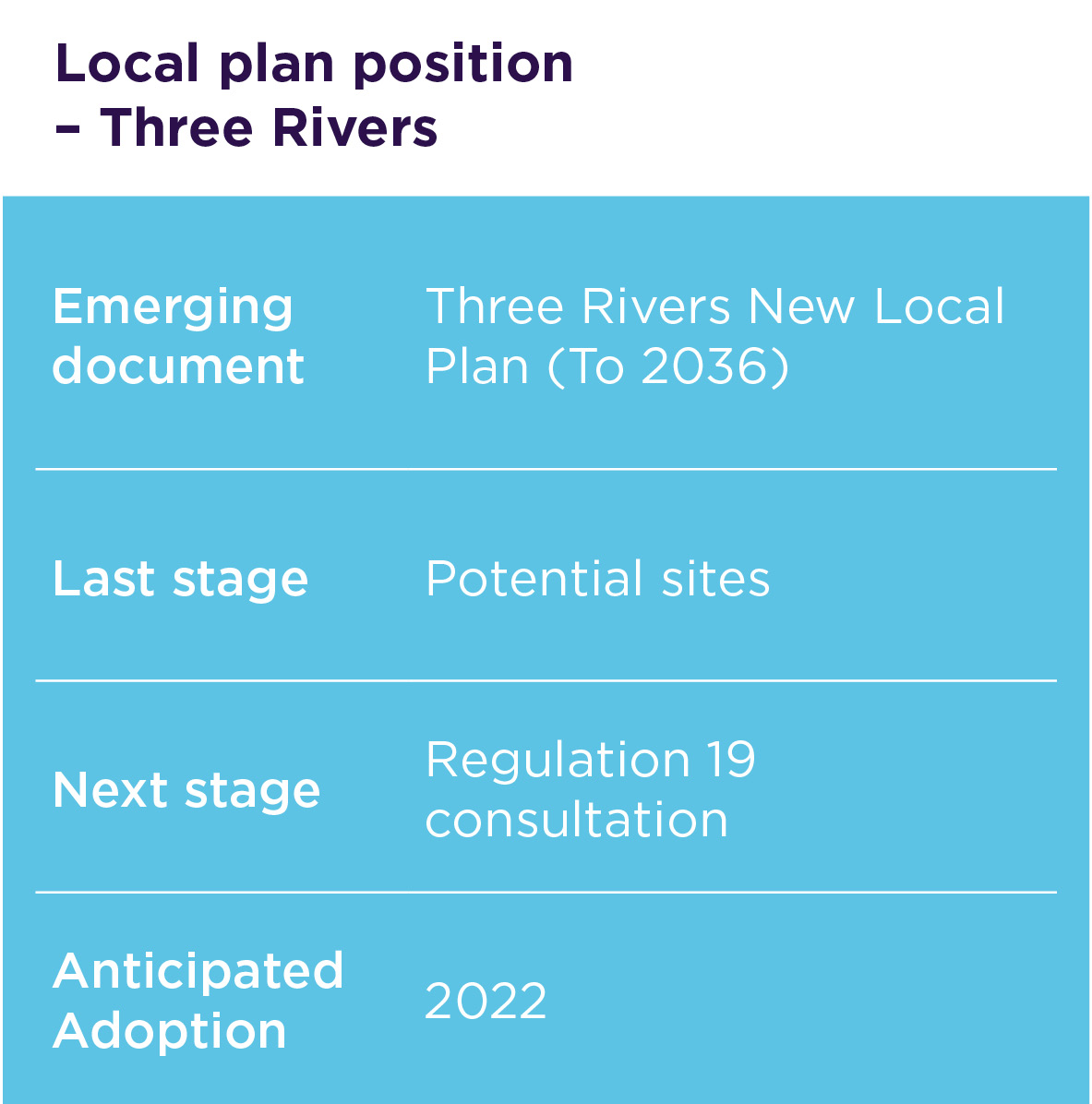
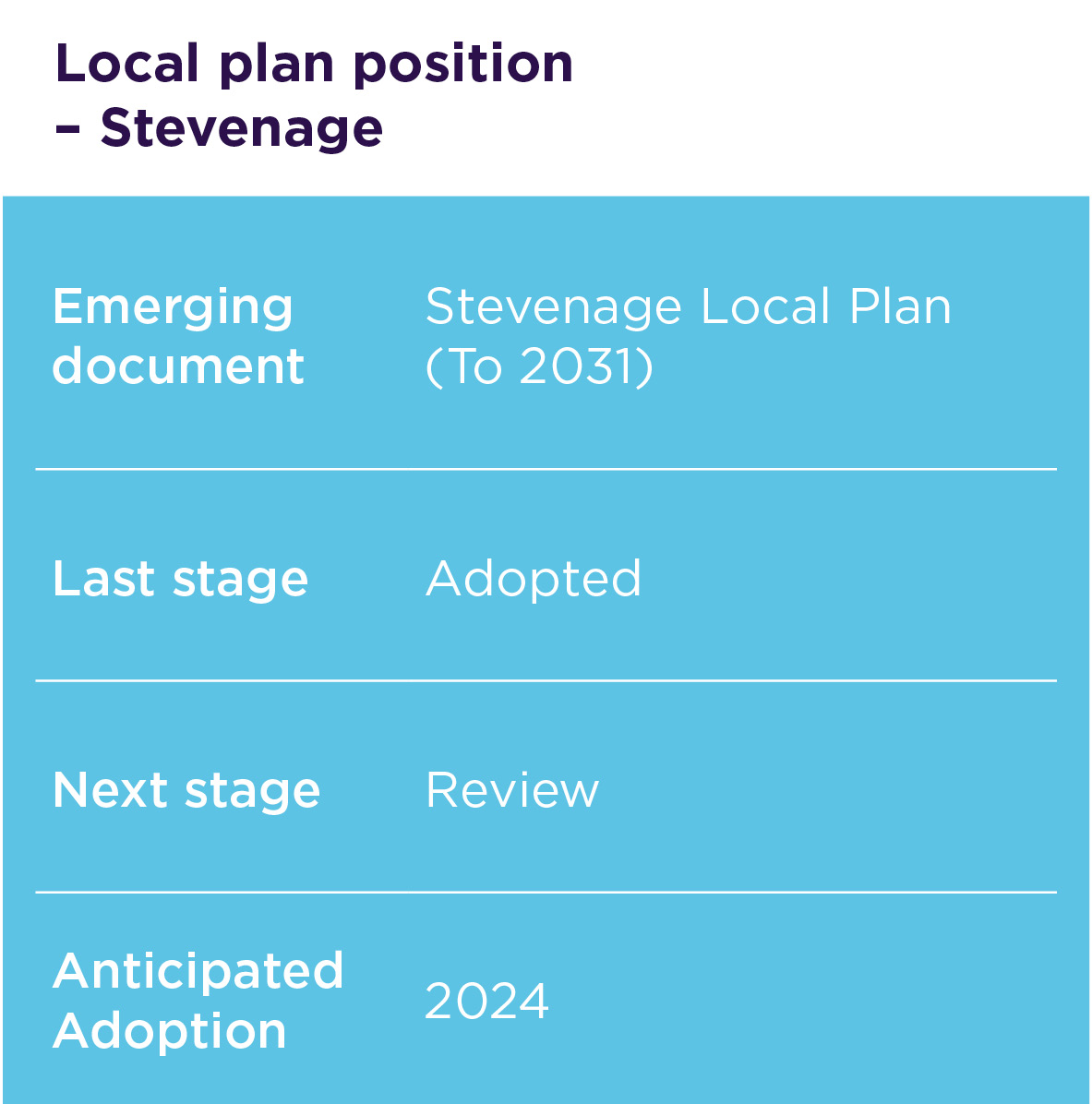
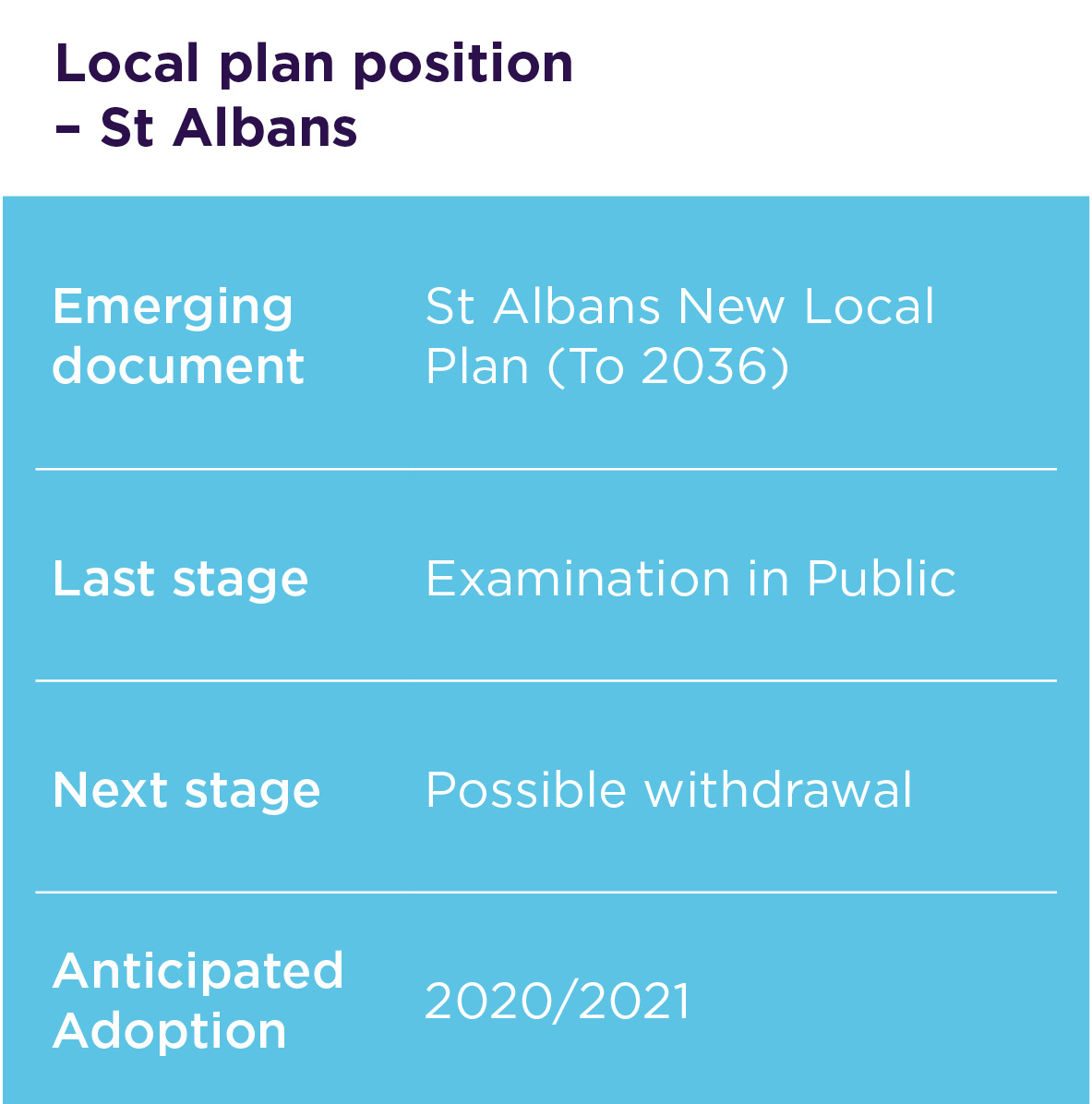
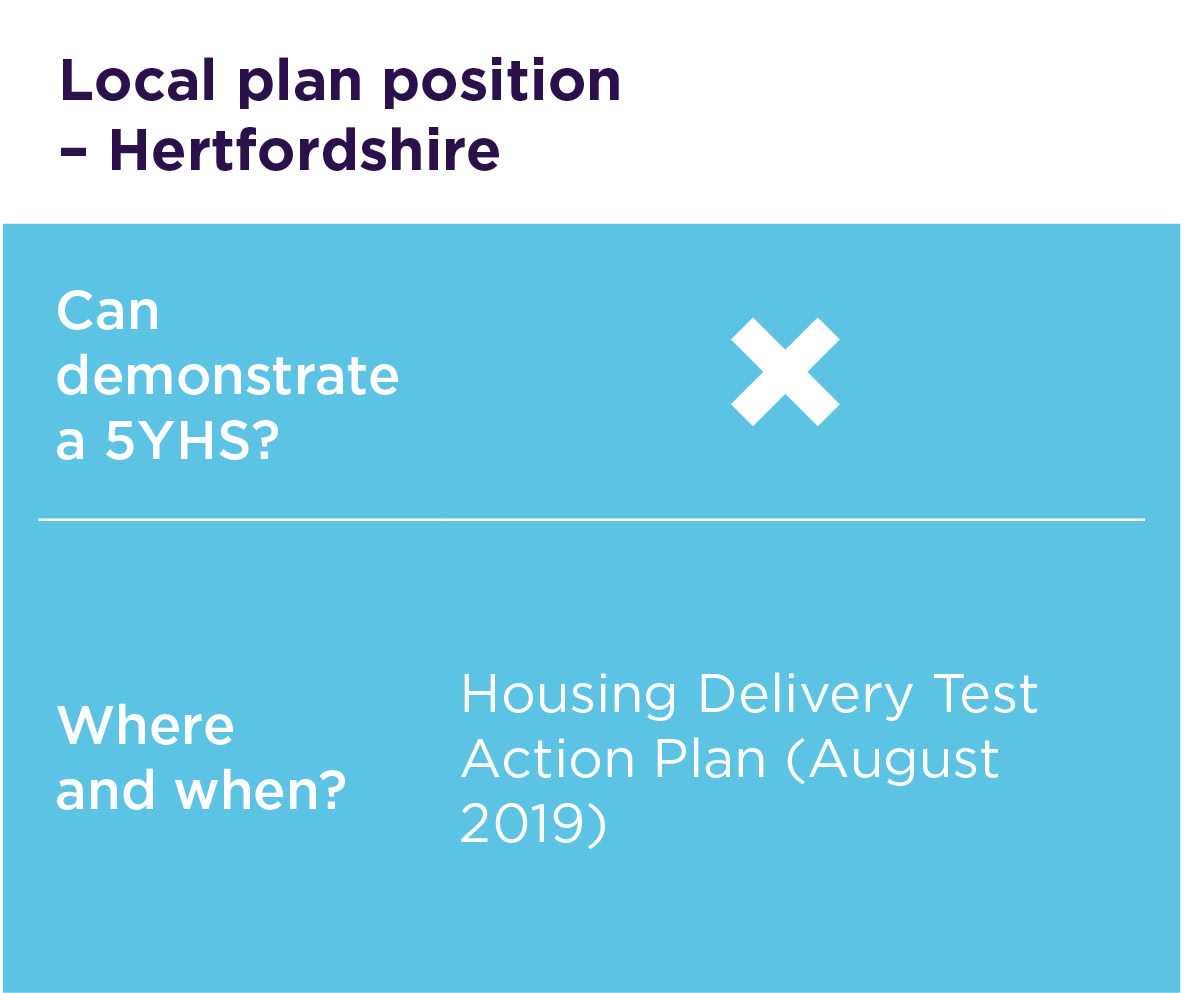
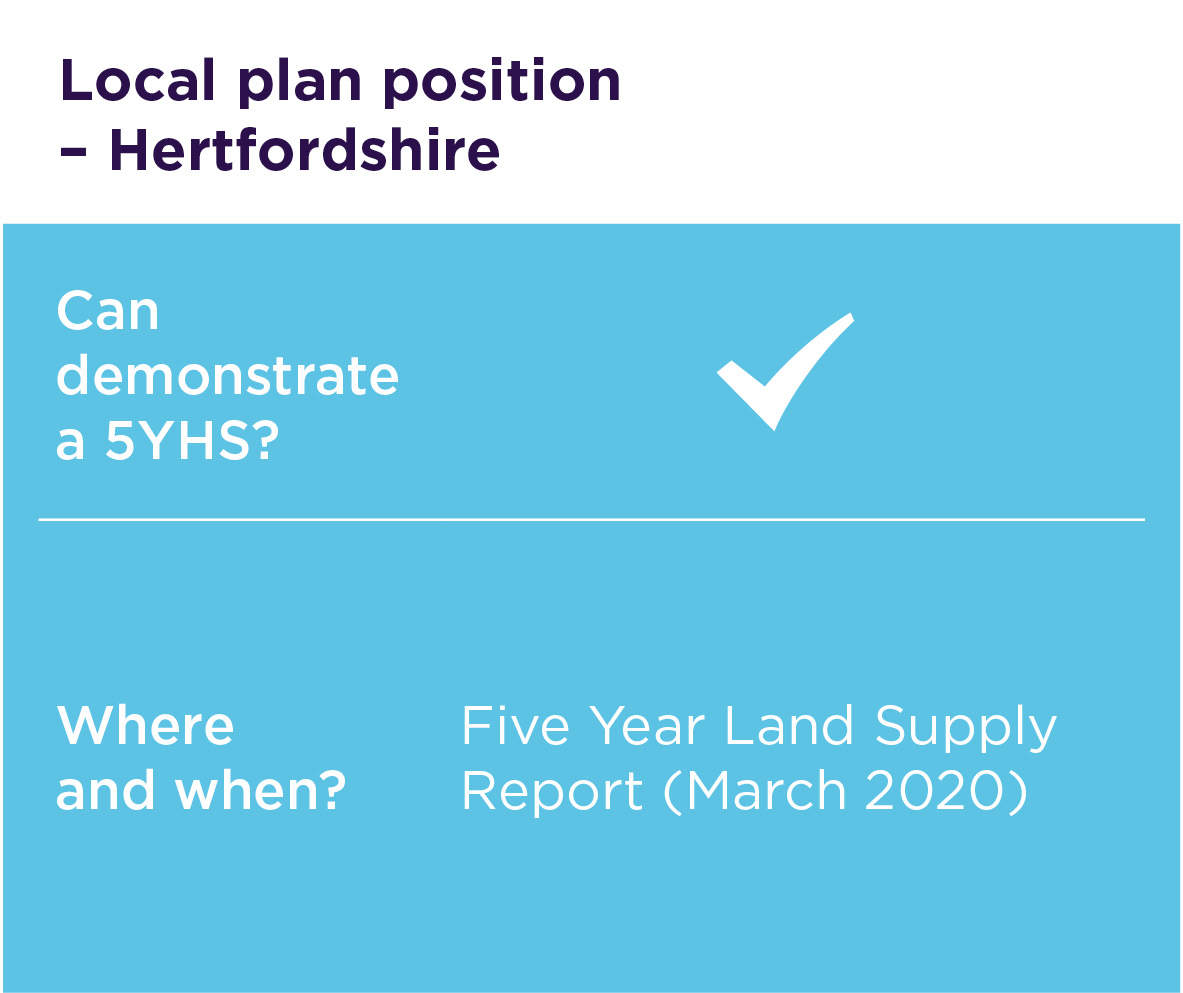
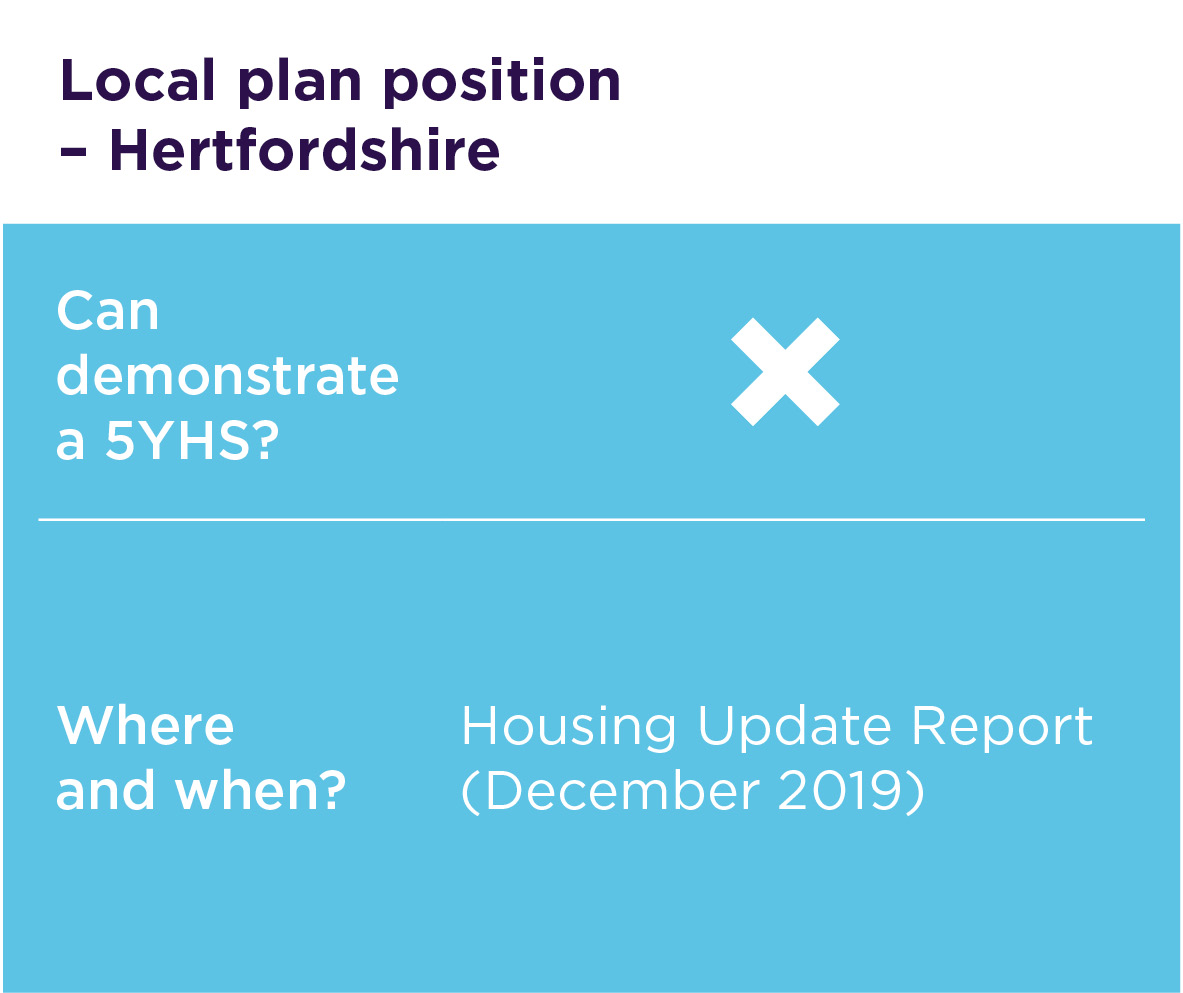
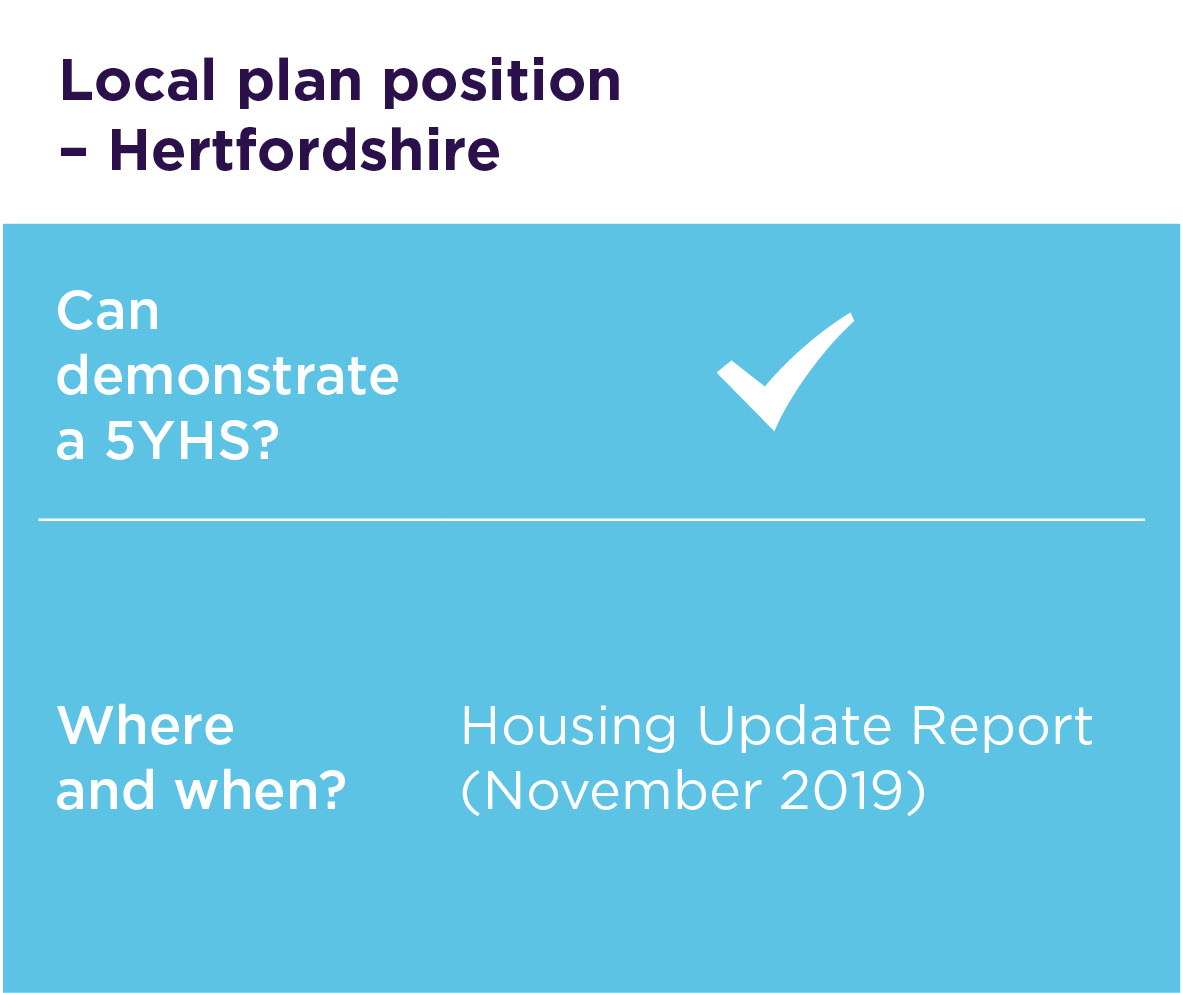

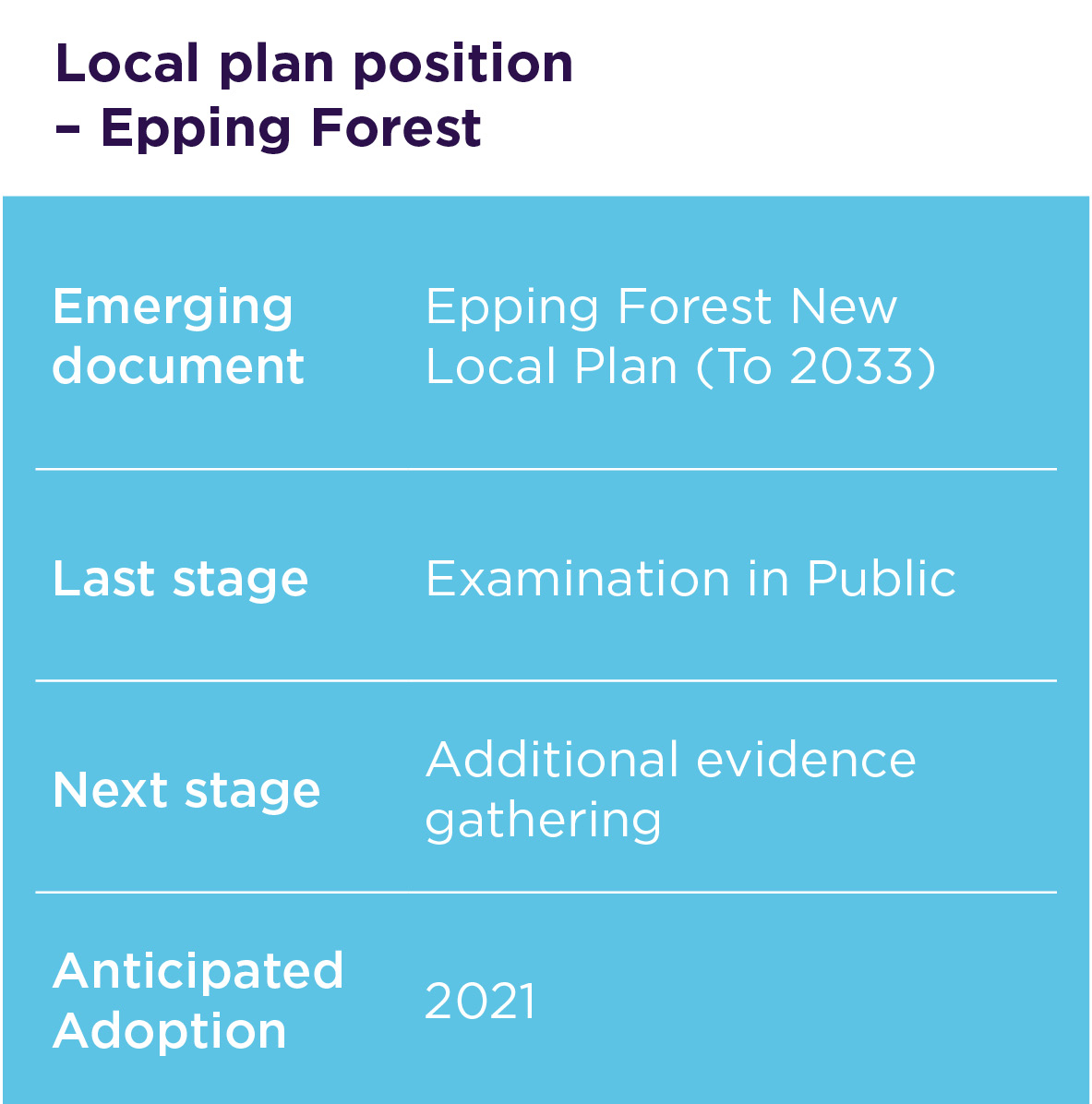
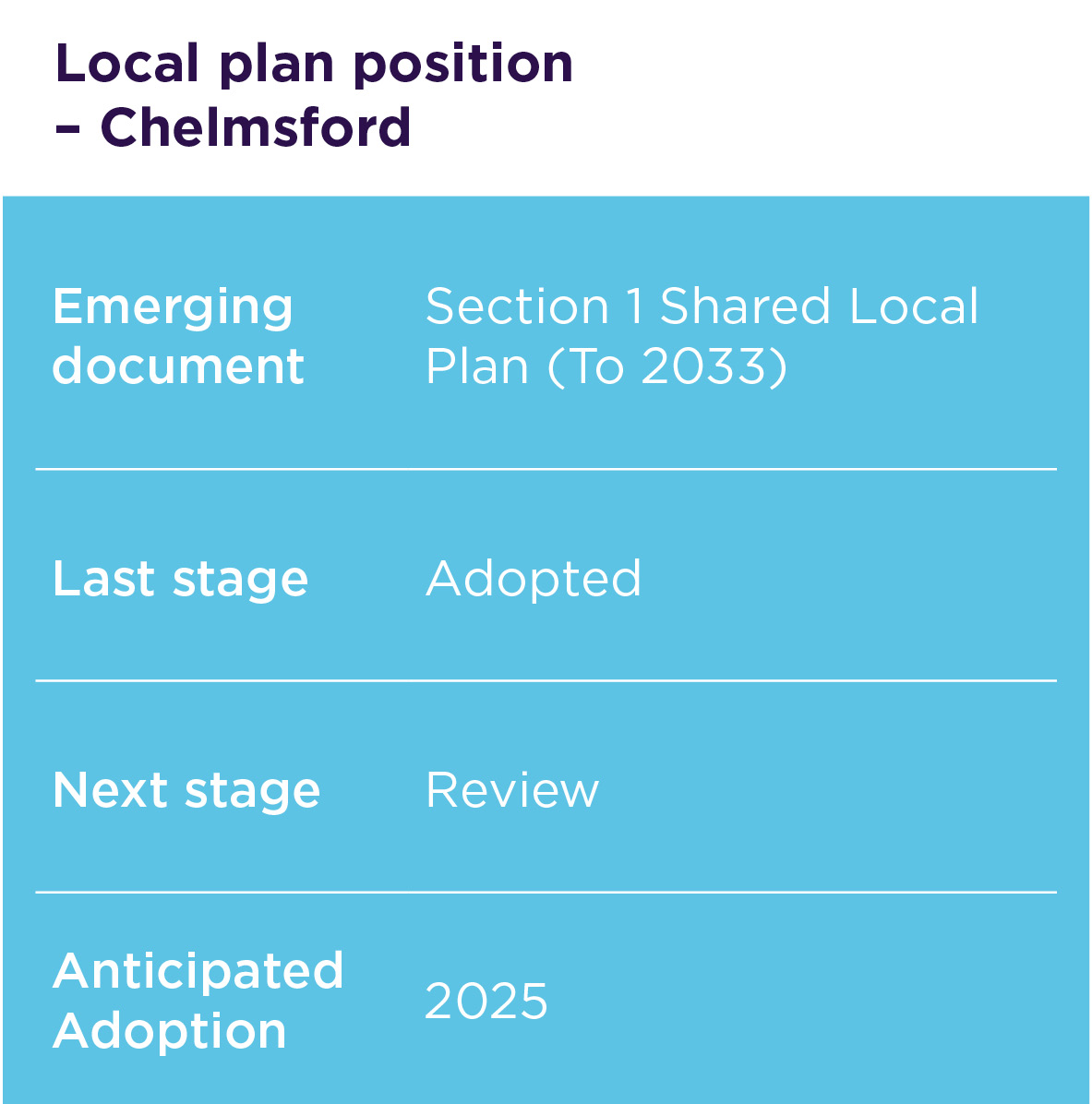
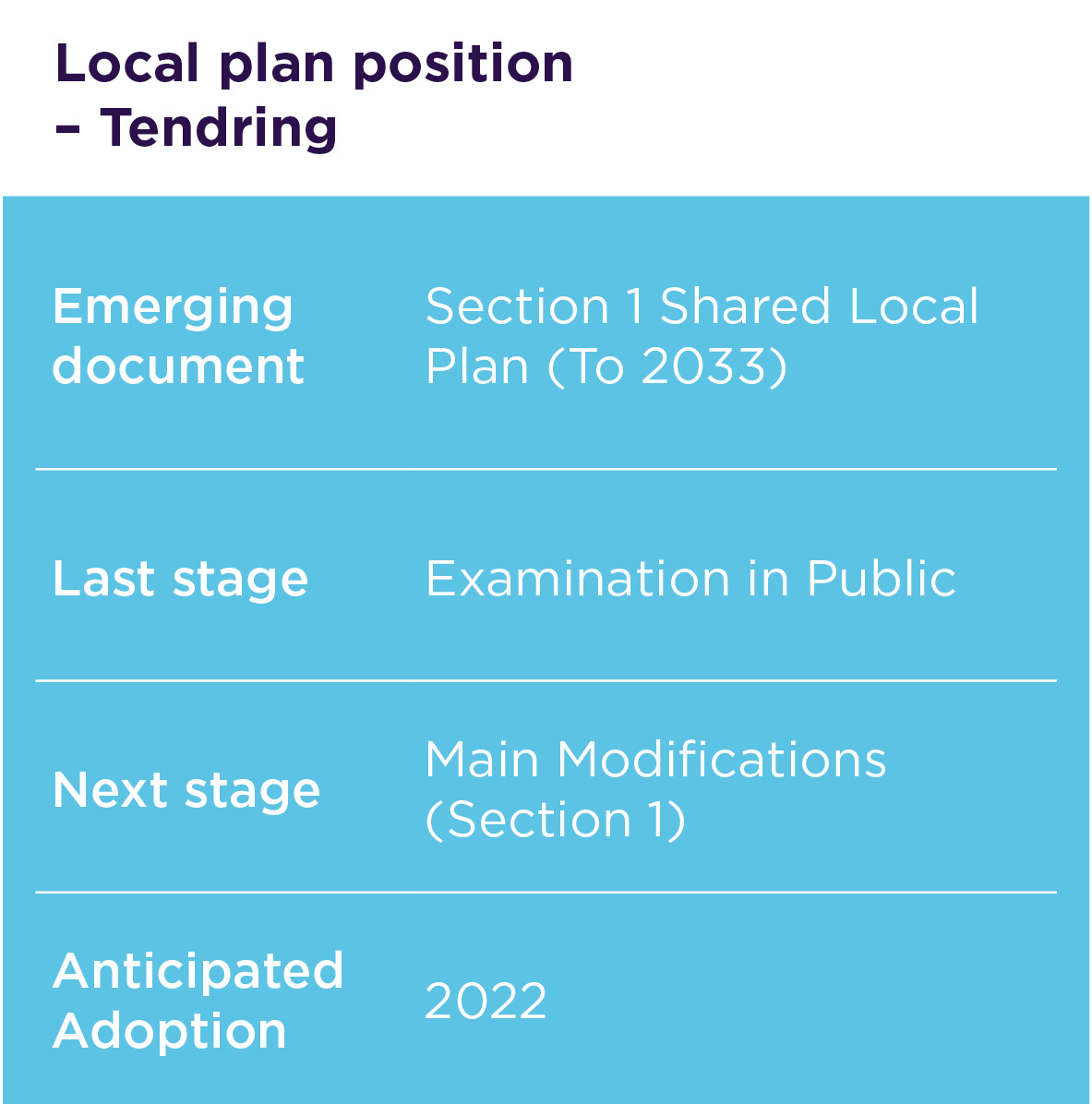
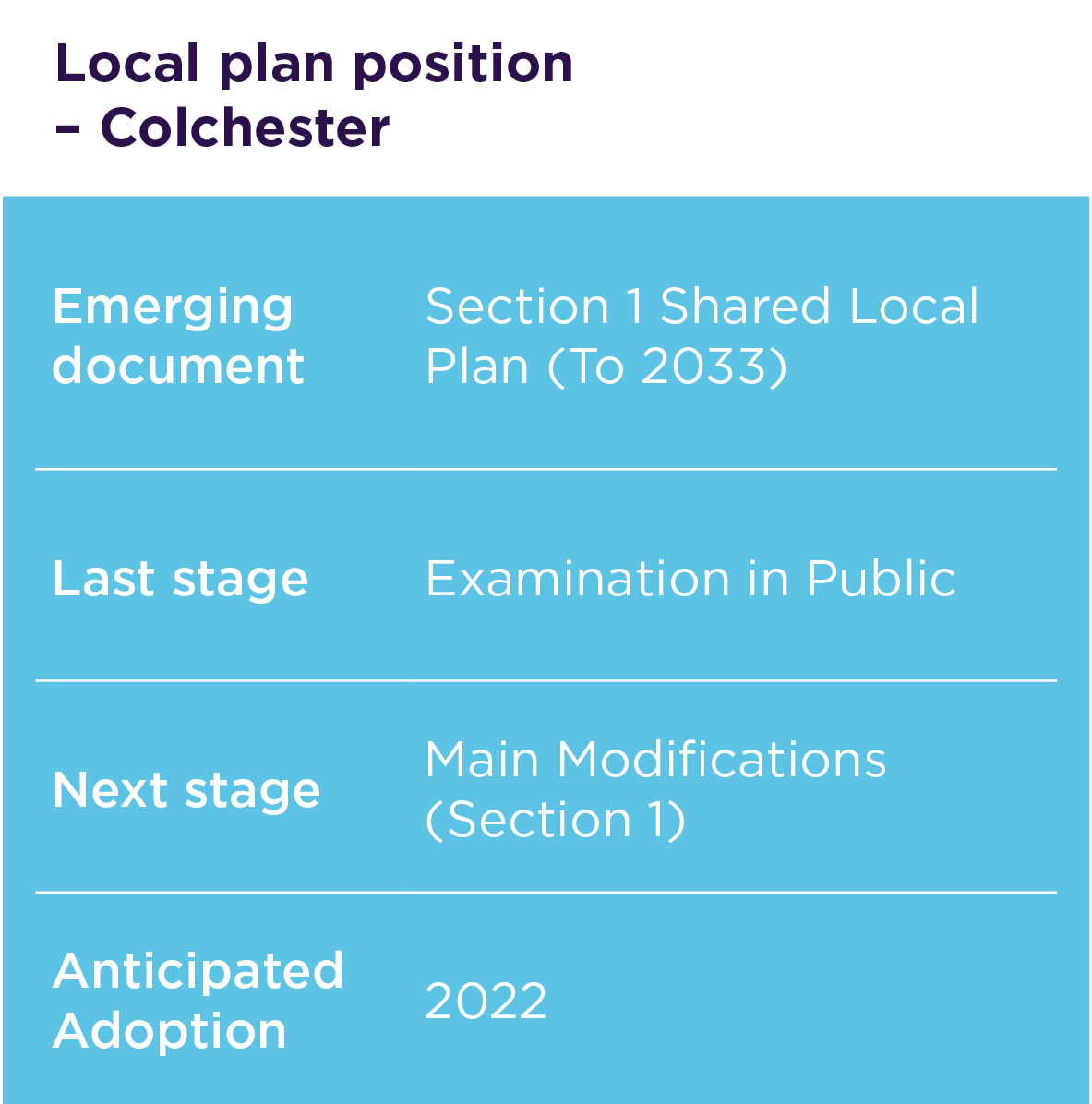
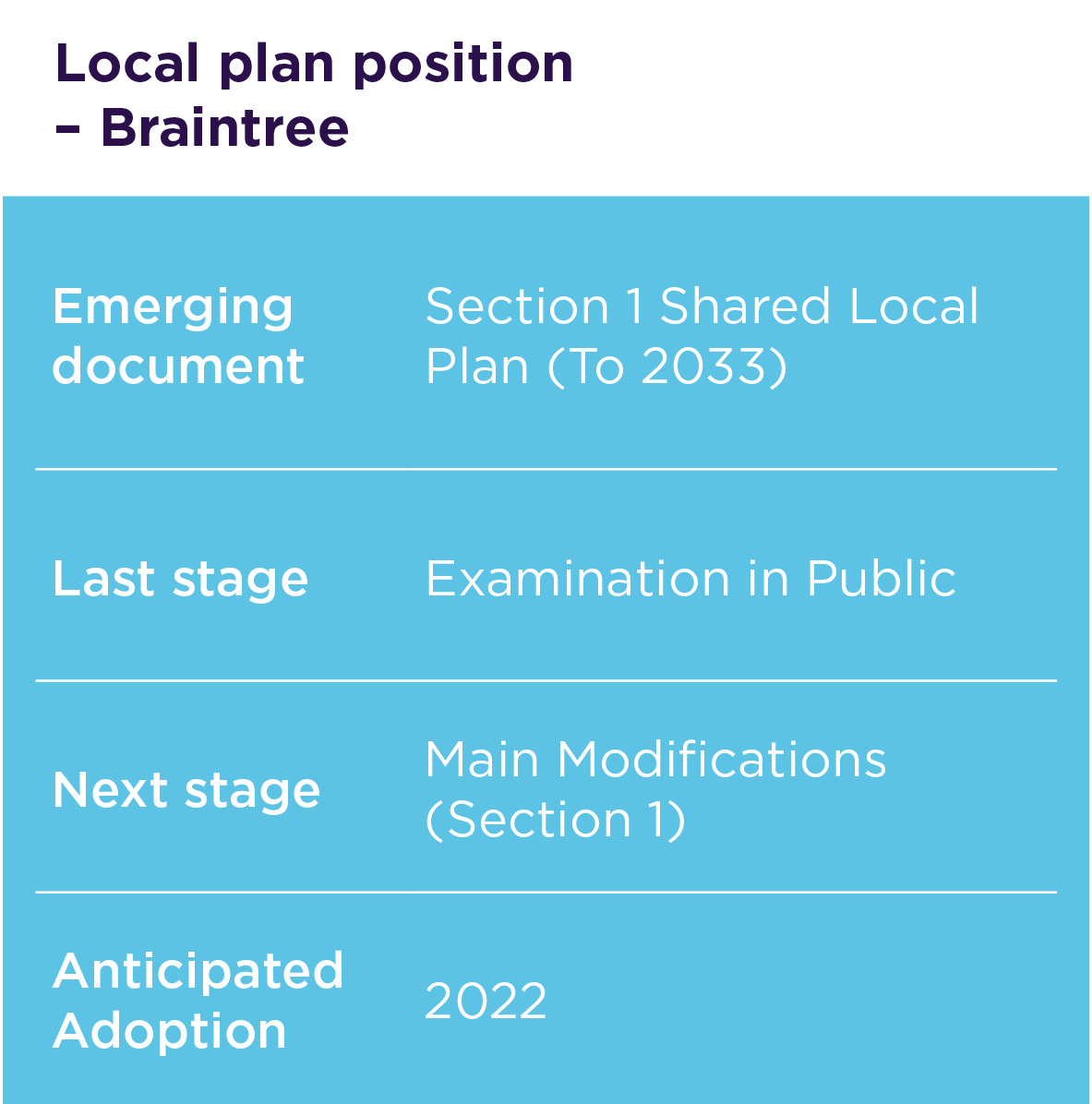
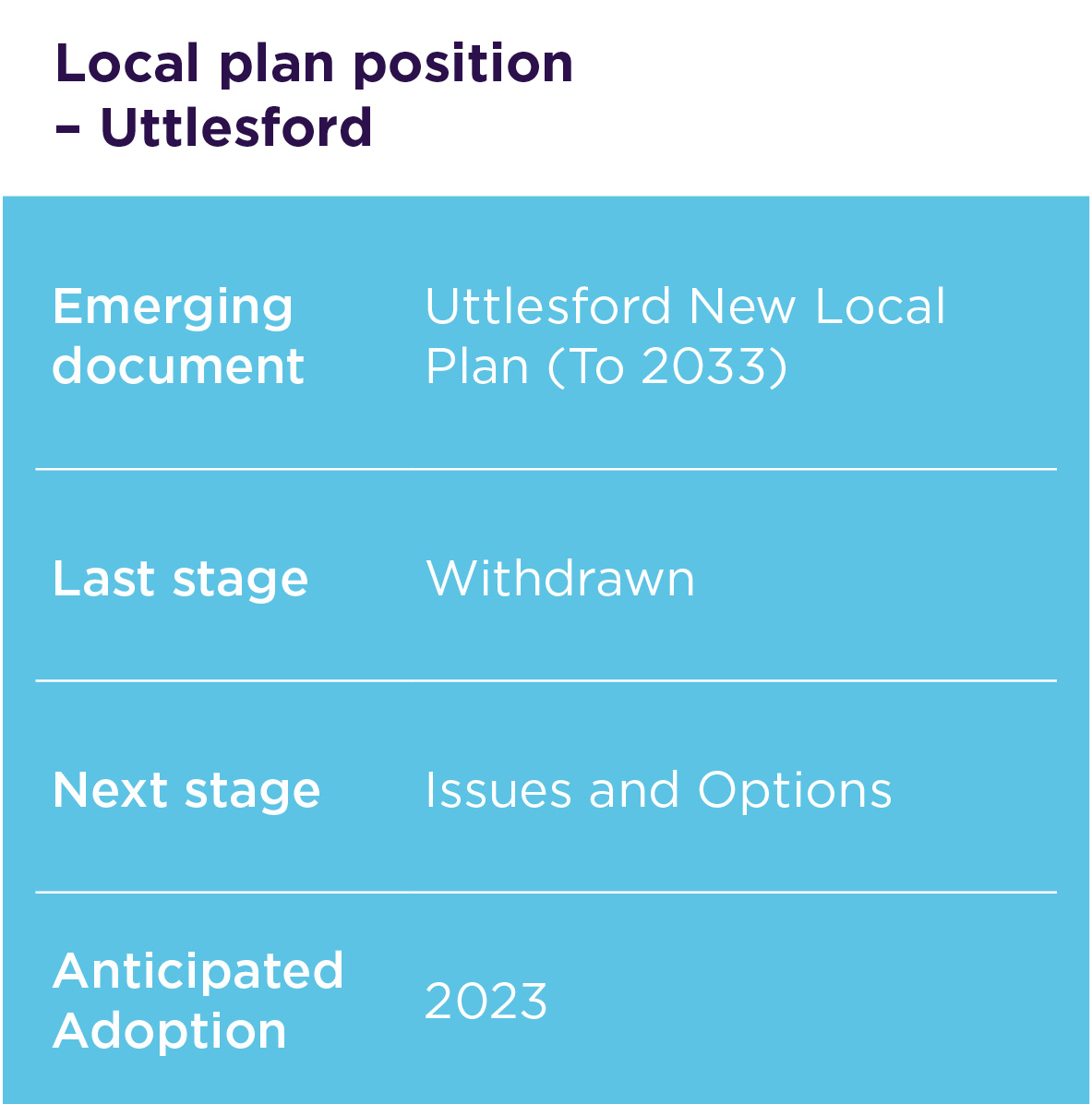
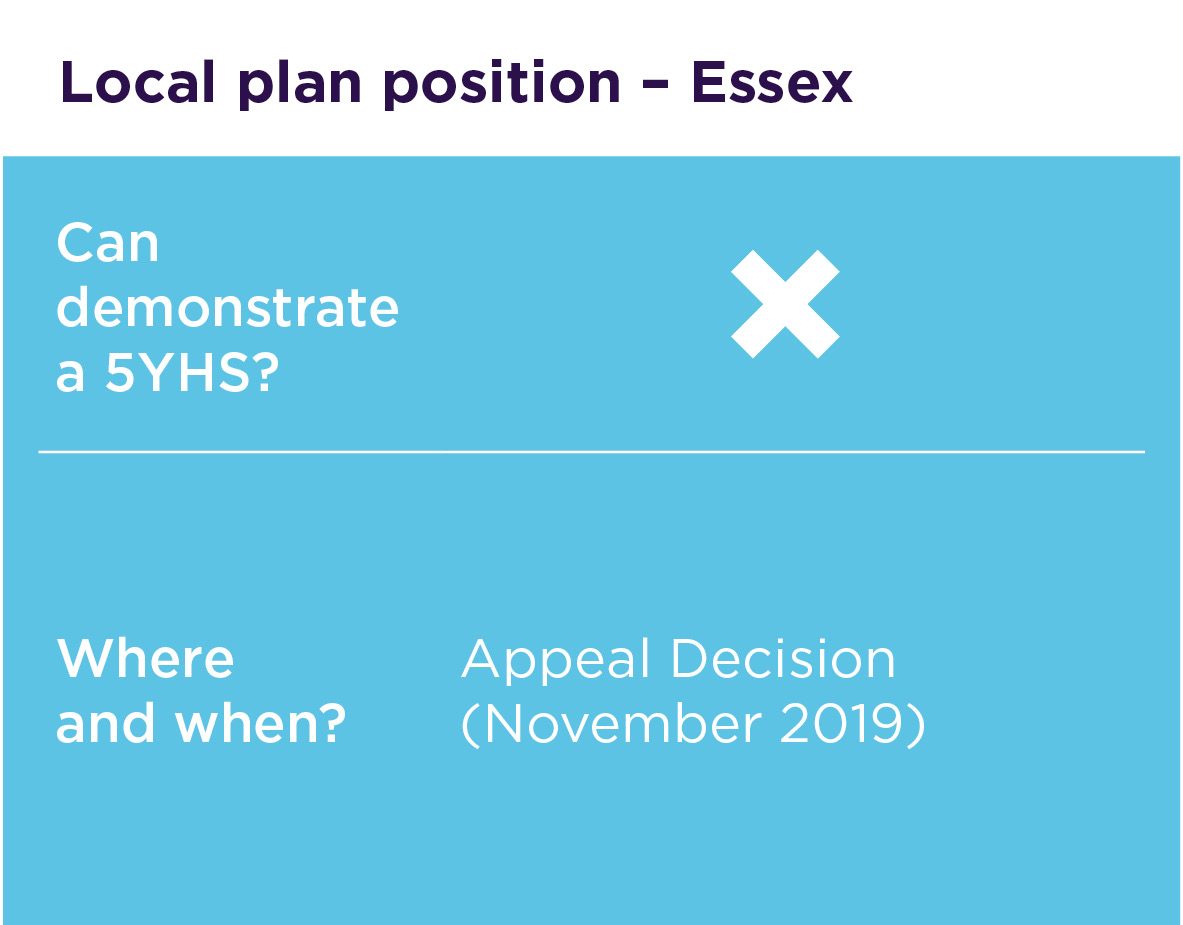
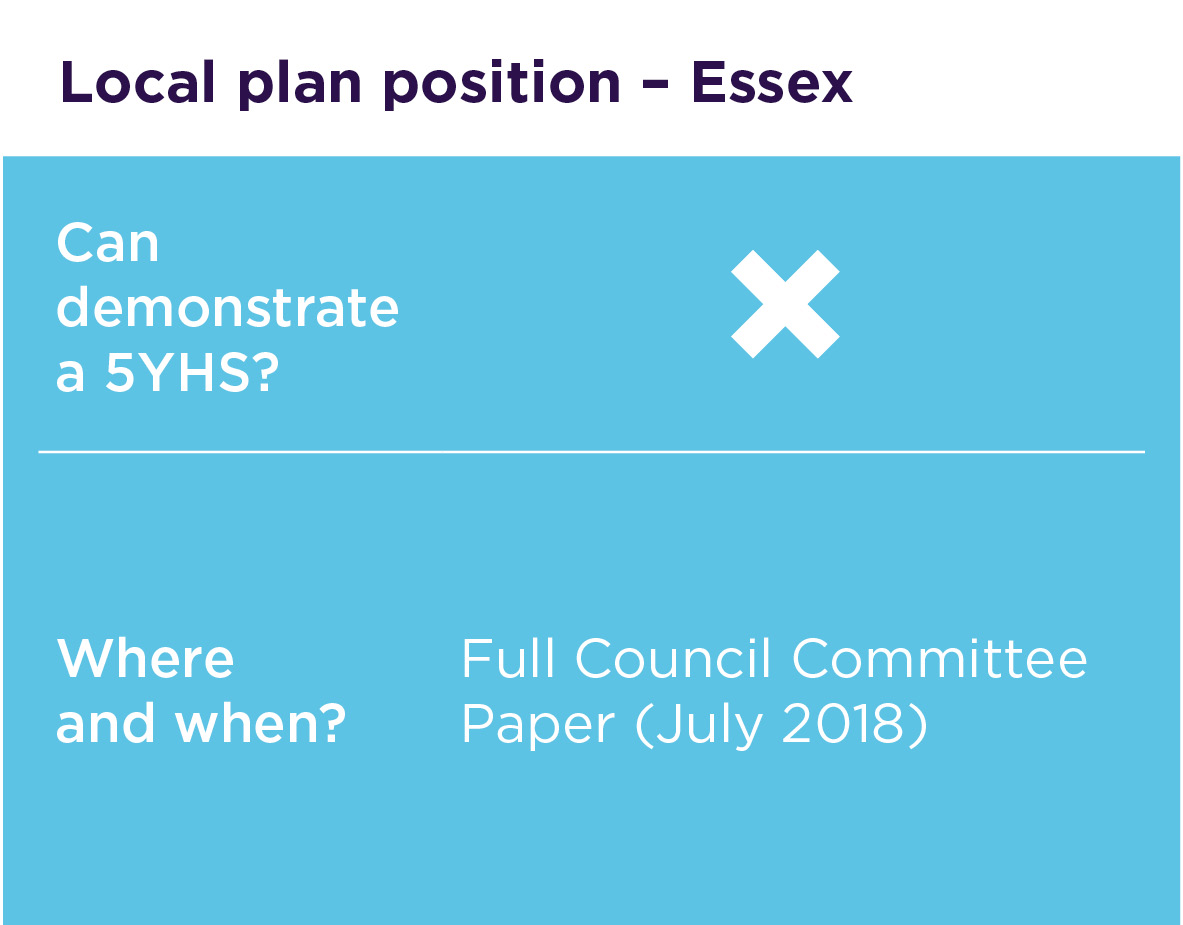
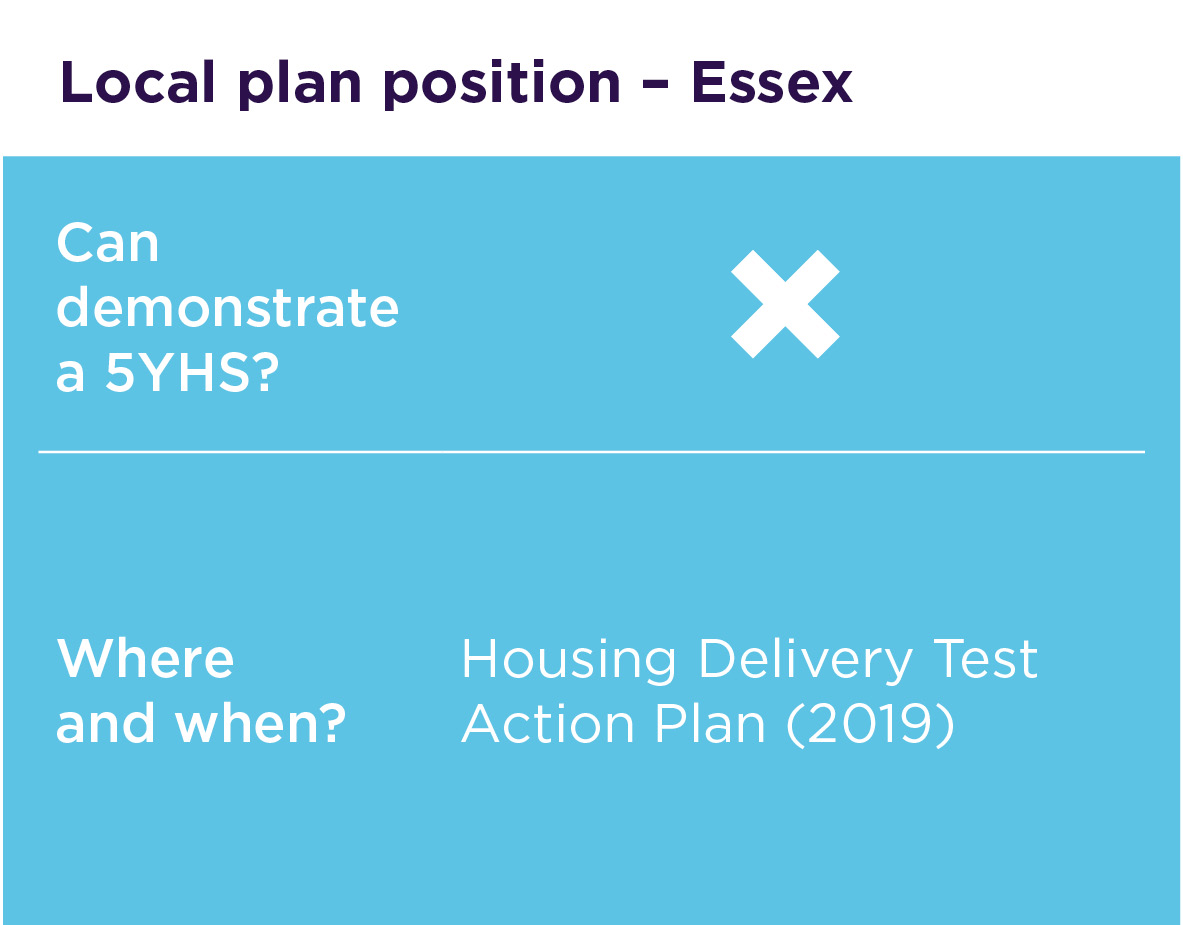
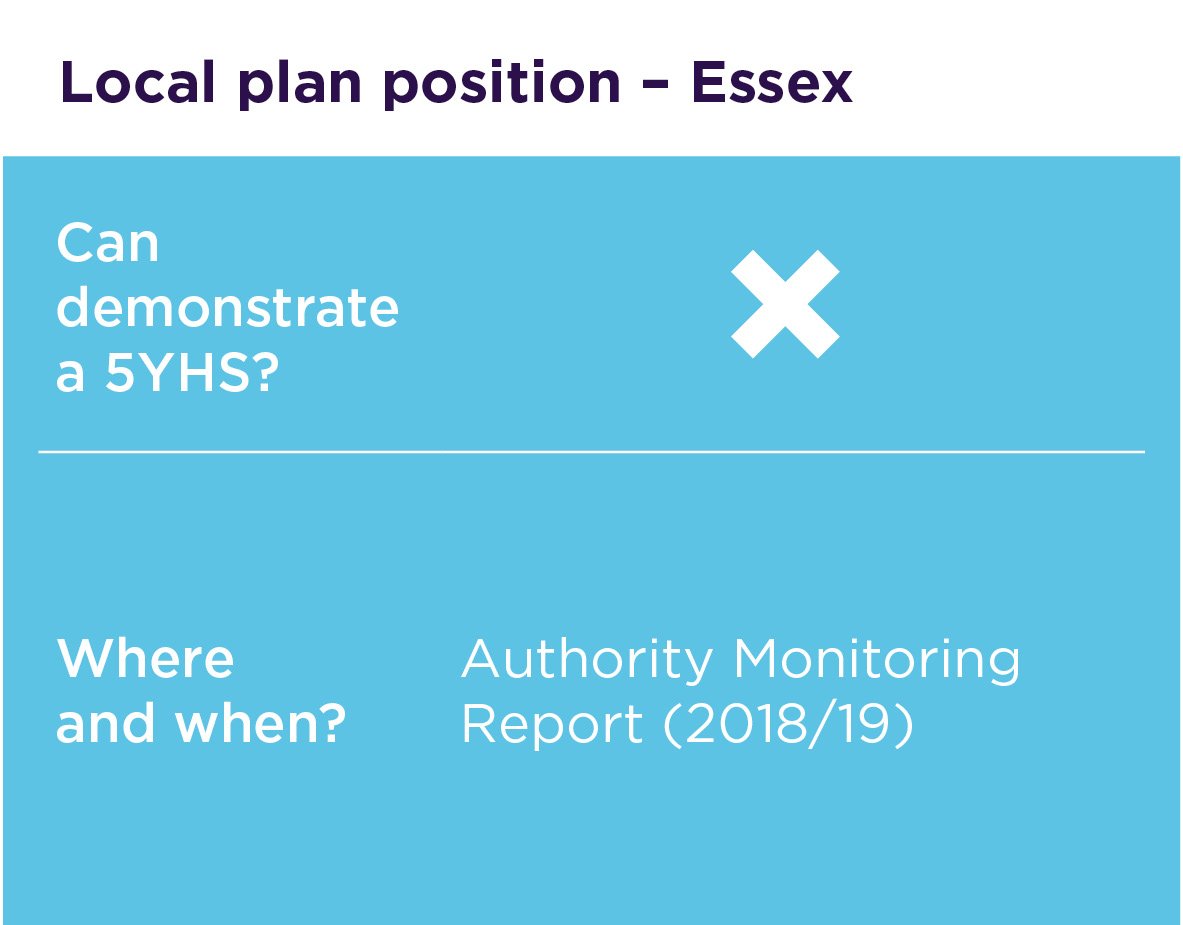
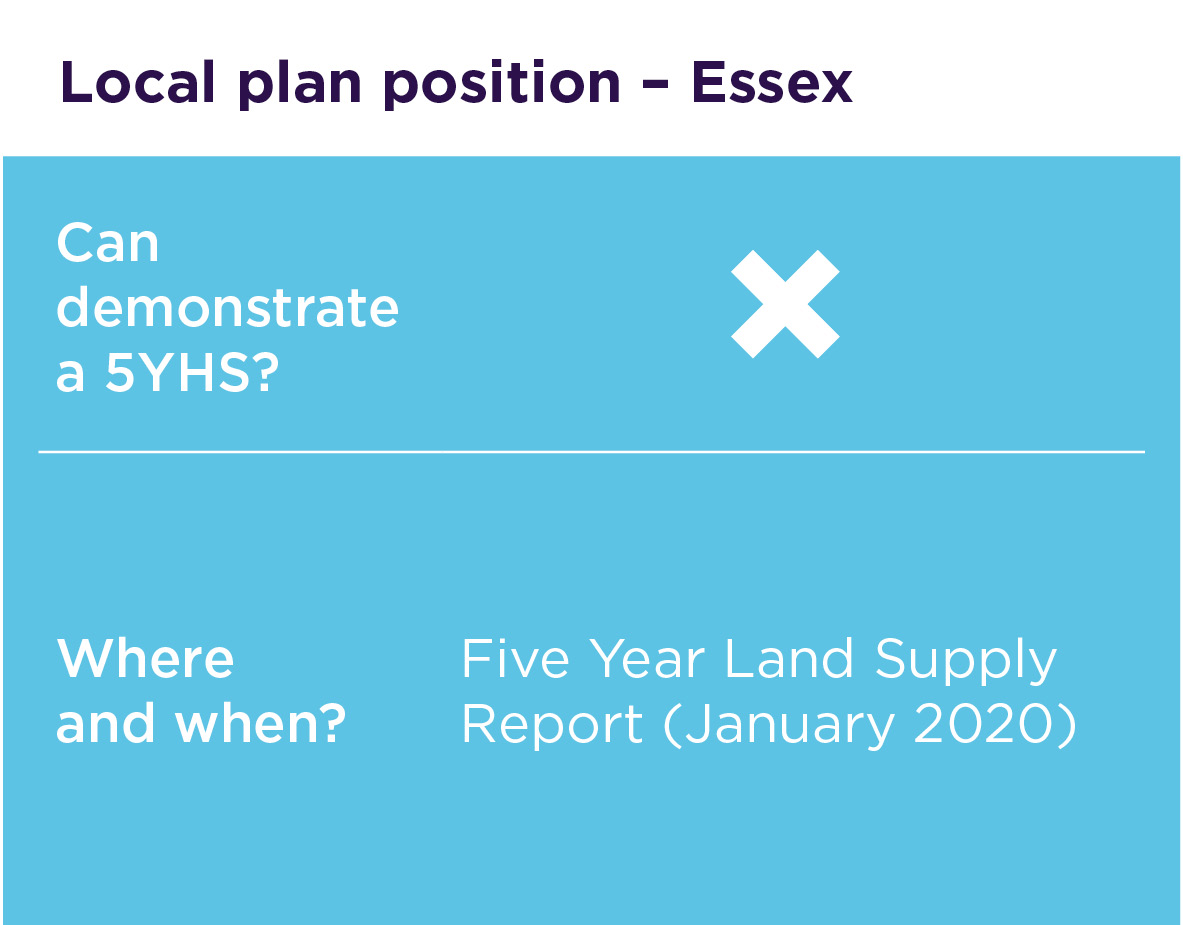
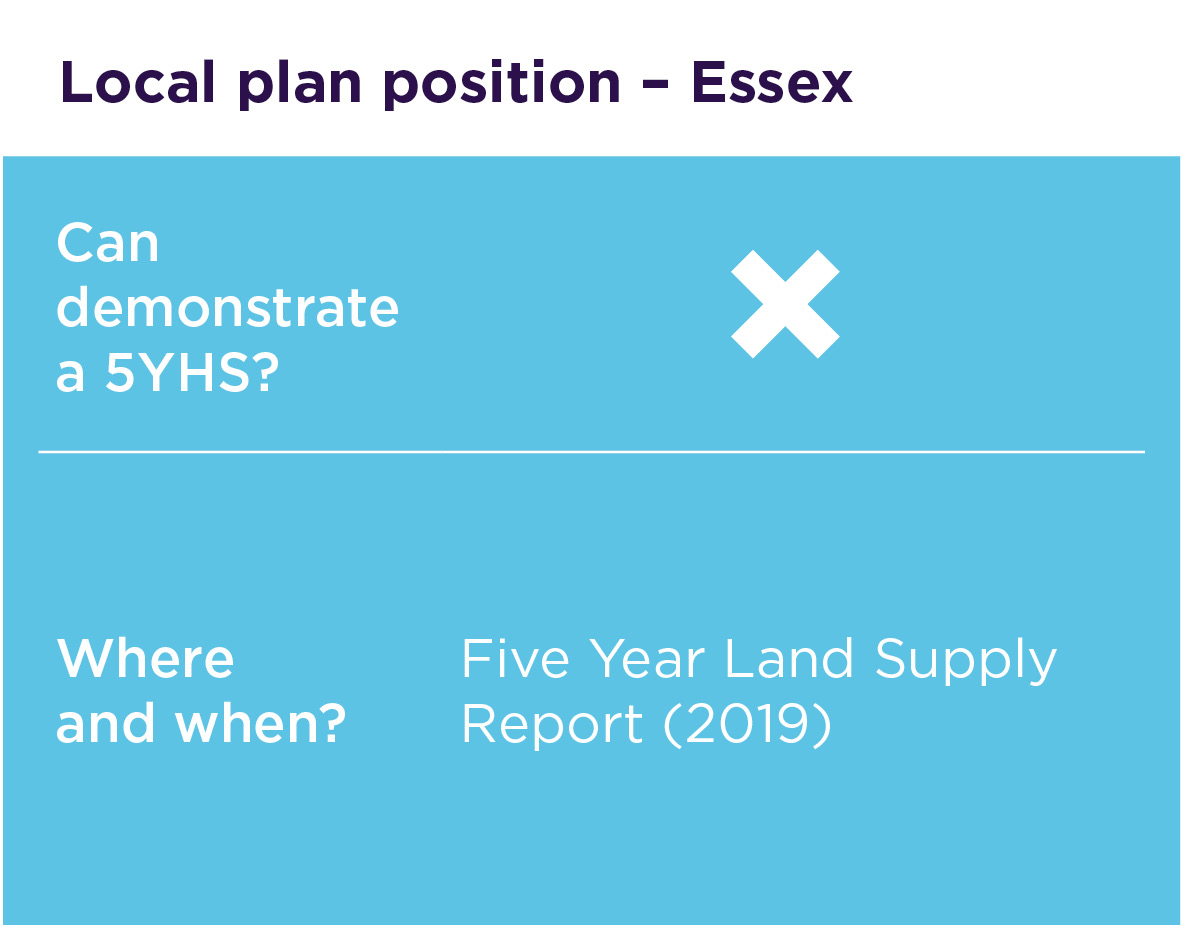
Planning Appendix



Following receipt of the inspector’s final report and the conclusion that a plan is viable, the council can then choose to adopt the plan to make it part of the local development framework (LDF).
Adoption
These stages involve the assessment of a submitted plan by appointed planning inspector(s). The plan is examined on various subjects through hearing sessions, sometimes resulting in further consultation and/or modifications to the plan. Once the inspector(s) is content with a plan, they will issue their final report on whether the plan is sound and legally compliant. The Inspector can also choose to reject the plan. This is a lengthy process and typically takes 8–24 months.
Examination in public (EiP)
This stage of the Local Plan represents the final collection of policies, fully supported by an evidence base, that the Council consider is legally and policy compliant. It is the final stage of public consultation prior to submission of a Plan for Examination.
Regulation 19
These stages of the Local Plan explore different policy options, including the production of, and public consultation on, supporting evidence documents. The most common stages are listed below, although all will not necessarily occur or in the listed order:
• Evidence gathering • Issues and options
• Preferred options • Draft policies
Regulation 18
This means that a Local Plan has been submitted to the Secretary of State for examination, which will commence within the next few months.
Submission
This is similar to ‘Preferred Options’ stage. It means the council has detailed the sites it is likely to include in its final draft Local Plan. However, there is still opportunity to promote new sites and influence the Local Plan before it is submitted for examination.
Potential sites
This stage means the Local Plan was found to be unsound at examination, leading the council to withdraw it at the inspector’s recommendation.
Withdrawn
This is an early stage of consultation but the council has indicated the likely spatial strategy will be taken forward in the final Local Plan. Under this stage, there is still opportunity to promote new sites and influence the Local Plan before it is submitted for examination.
Preferred Options
This is the final draft before the Local Plan is submitted to the Secretary of State for examination. There are unlikely to be any material amendments before the plan is submitted.
Pre-submission draft
This means the Local Plan is under examination. The inspector has requested further evidence to be produced by the council to support the Local Plan and is likely to undertake additional hearings to test this evidence.
Additional evidence gathering
This means the Local Plan has undergone its examination and the inspector has recommended main modifications to make the plan ‘sound’. These will need to be consulted on before the inspector issues their final report after which the council can adopt the Local Plan.
Main Modifications
This is the initial consultation on high level spatial strategy options. There remains ample opportunity to promote sites for potential inclusion in the emerging Local Plan going forward.
Issues and Options













R
CO
CH
TH
TE
S
EP
CP
BRE
BR
BAS











W
TR
S
SA
H
D
WH
EH
B
Planning Appendix



This is similar to ‘Preferred Options’ stage. It means the council has detailed the sites it is likely to include in its final draft Local Plan. However, there is still opportunity to promote new sites and influence the Local Plan before it is submitted for examination.
Potential sites
This stage means the Local Plan was found to be unsound at examination, leading the council to withdraw it at the inspector’s recommendation.
Withdrawn
This is an early stage of consultation but the council has indicated the likely spatial strategy will be taken forward in the final Local Plan. Under this stage, there is still opportunity to promote new sites and influence the Local Plan before it is submitted for examination.
Preferred Options
This is the final draft before the Local Plan is submitted to the Secretary of State for examination. There are unlikely to be any material amendments before the plan is submitted.
Pre-submission draft
This means the Local Plan is under examination. The inspector has requested further evidence to be produced by the council to support the Local Plan and is likely to undertake additional hearings to test this evidence.
Additional evidence gathering
This means the Local Plan has undergone its examination and the inspector has recommended main modifications to make the plan ‘sound’. These will need to be consulted on before the inspector issues their final report after which the council can adopt the Local Plan.
Main Modifications
This is the initial consultation on high level spatial strategy options. There remains ample opportunity to promote sites for potential inclusion in the emerging Local Plan going forward.
Issues and Options
This means that a Local Plan has been submitted to the Secretary of State for examination, which will commence within the next few months.
Submission
Following receipt of the inspector’s final report and the conclusion that a plan is viable, the council can then choose to adopt the plan to make it part of the local development framework (LDF).
Adoption
These stages involve the assessment of a submitted plan by appointed planning inspector(s). The plan is examined on various subjects through hearing sessions, sometimes resulting in further consultation and/or modifications to the plan. Once the inspector(s) is content with a plan, they will issue their final report on whether the plan is sound and legally compliant. The Inspector can also choose to reject the plan. This is a lengthy process and typically takes 8–24 months.
Examination in public (EiP)
This stage of the Local Plan represents the final collection of policies, fully supported by an evidence base, that the Council consider is legally and policy compliant. It is the final stage of public consultation prior to submission of a Plan for Examination.
Regulation 19
These stages of the Local Plan explore different policy options, including the production of, and public consultation on, supporting evidence documents. The most common stages are listed below, although all will not necessarily occur or in the listed order:
• Evidence gathering • Issues and options
• Preferred options • Draft policies
Regulation 18













































H
W
TR
Broxbourne
B
5-year housing supply:


Local Plan position:
Dacorum
D
5-year housing supply:


Local Plan position:
East Herts
EH
5-year housing supply:


Local Plan position:
Hertsmere
H
5-year housing supply:


Local Plan position:
North Hertfordshire
NH
5-year housing supply:


Local Plan position:
St Albans
SA
5-year housing supply:


Local Plan position:
Stevenage
S
5-year housing supply:


Local Plan position:
Three Rivers
TR
5-year housing supply:


Local Plan position:
Watford
W
5-year housing supply:


Local Plan position:
Welwyn Hatfield
WH
5-year housing supply:


Local Plan position:
Watford
W
5-year housing supply:


Local Plan position:
Three Rivers
TR
5-year housing supply:


Local Plan position:
Stevenage
S
5-year housing supply:


Local Plan position:
St Albans
SA
5-year housing supply:


Local Plan position:
North Hertfordshire
NH
5-year housing supply:


Local Plan position:
Hertsmere
H
5-year housing supply:


Local Plan position:
East Herts
EH
5-year housing supply:


Local Plan position:
Dacorum
D
5-year housing supply:


Local Plan position:
Broxbourne
B
5-year housing supply:


Local Plan position:

U
CO
CP
BRE
CH
BAS
EP
S
BR
TE
This map illustrates local authorities individual Local Plan positions and their 5-year housing supply
10 local authorities within Essex
R
TH
Castle Point
CP
5-year housing supply:


Local Plan position:
Thurrock
TH
5-year housing supply:


Local Plan position:
Essex – Housing delivery requirements vs delivery


Estimated Housing Delivery Test 2020 (2017/18 – 2019/20) 2018/19)
Housing Delivery Test 2019 (2016/17 – 2018/19)
ESSEX
MAP

The requirement to deliver enough housing to meet local housing need figures will place authorities, who are currently delivering at lower rates, under pressure. Should delivery rates fail to remain steady or fall from existing levels, authorities will be required to identify additional 20% buffers to 5-year supplies, and/or produce action plans to address poor delivery. This has the potential to create additional opportunities, either through the identification of new sites, or the need to densify existing development sites.
Due to the transitional arrangements currently in place for the HDT, the November 2020 HDT results will be the first year where the standard methodology for calculating local housing need will impact the outcome. The below table compares how the next instalment of the HDT test may look if existing delivery rates are maintained, painting an even more bleak picture for the majority of LPAs in Hertfordshire and Essex.
The second instalment of the Government’s Housing Delivery Test (HDT) was published in February 2020. Essex and Hertfordshire contain some of most poorly performing local planning authorities (LPAs) in the country. Four of the LPAs score so low that they automatically trigger the presumption in favour of sustainable development within footnote seven of the National Planning Policy Framework (NPPF), whilst a further 11 are required to apply a 20% buffer to their 5-year housing supply in order to make up for historical under-delivery.
Garden Communities
Update
Hertfordshire is arguably the home of the garden city movement in the UK, with Welwyn Garden City celebrating its 100th anniversary this year, and 60 years after their founding, Stevenage and Hatfield are enacting plans to revamp their respective town centres to be fit for the 21st century. However, more recently attention has shifted to Essex and its plans for a new generation of garden communities.
Housing
delivery
test
GARDEN
COMMUNITIES